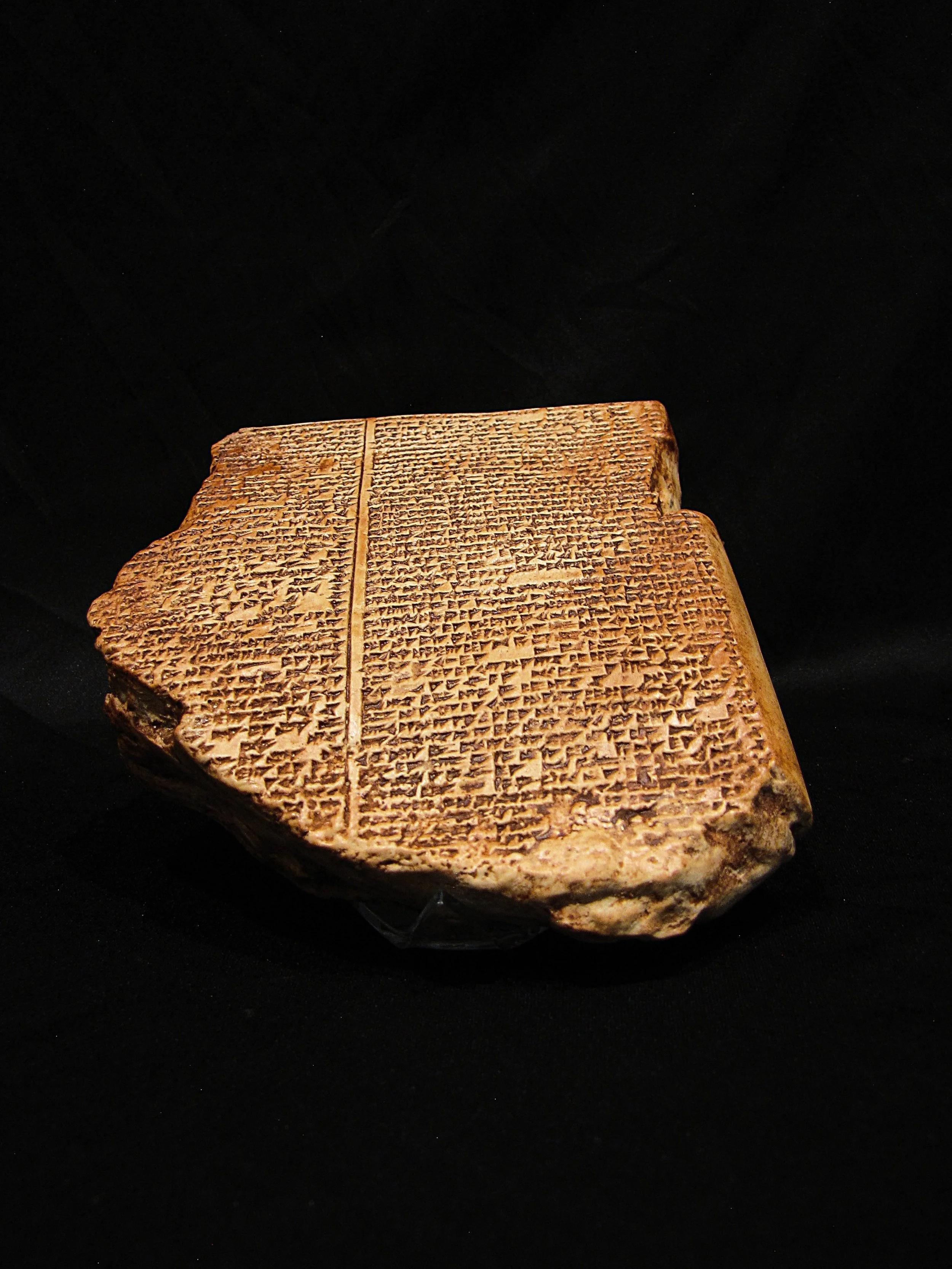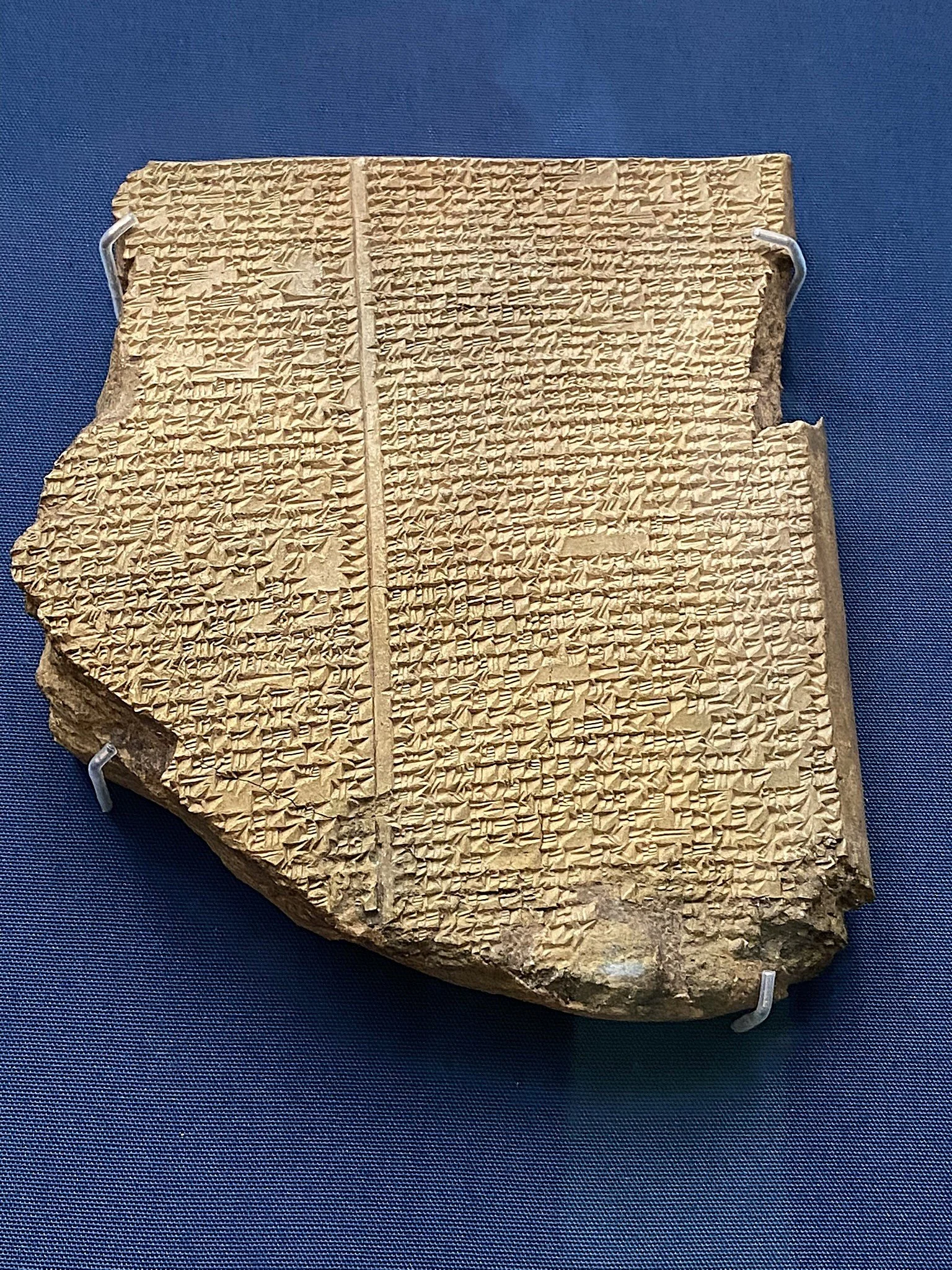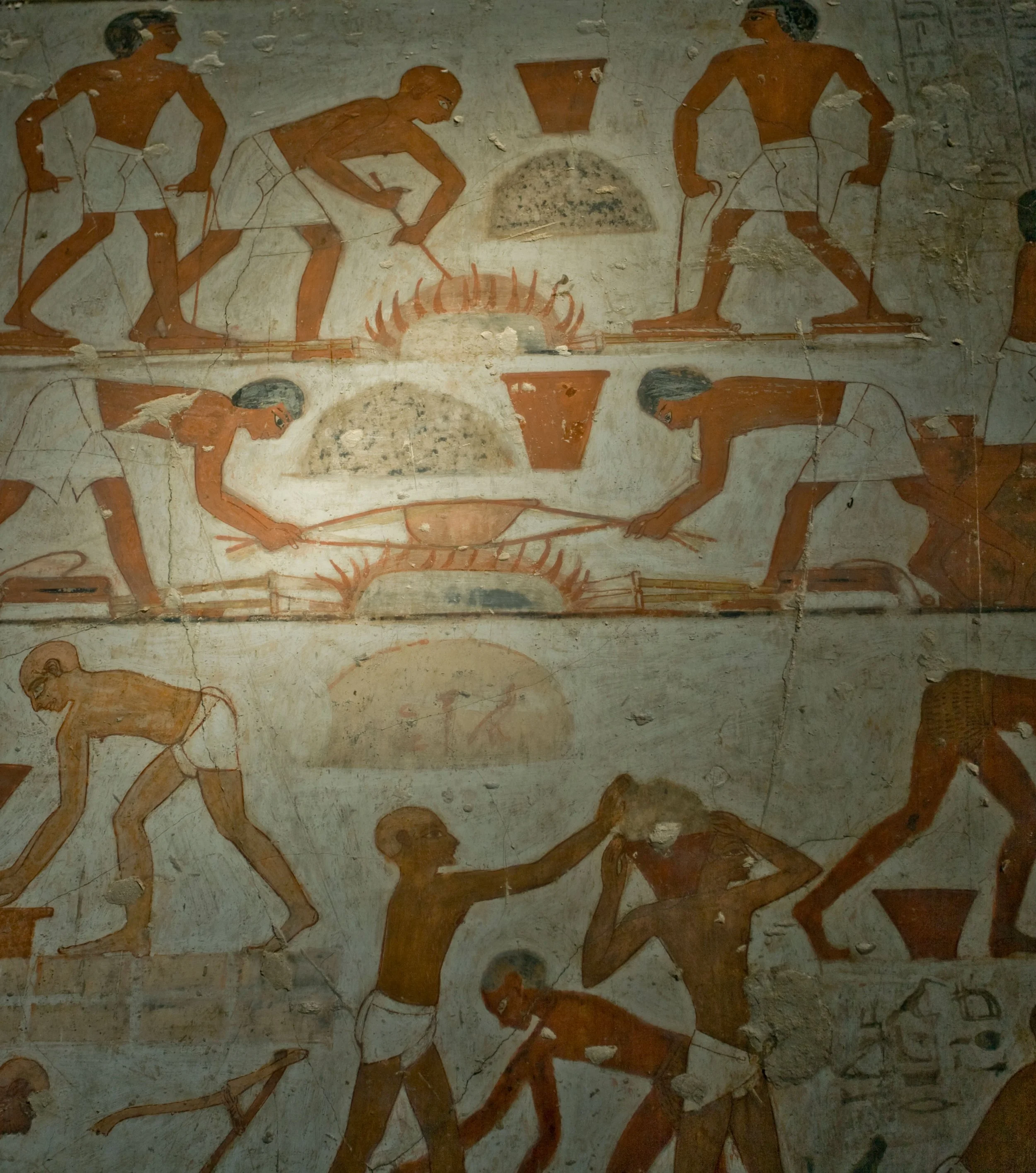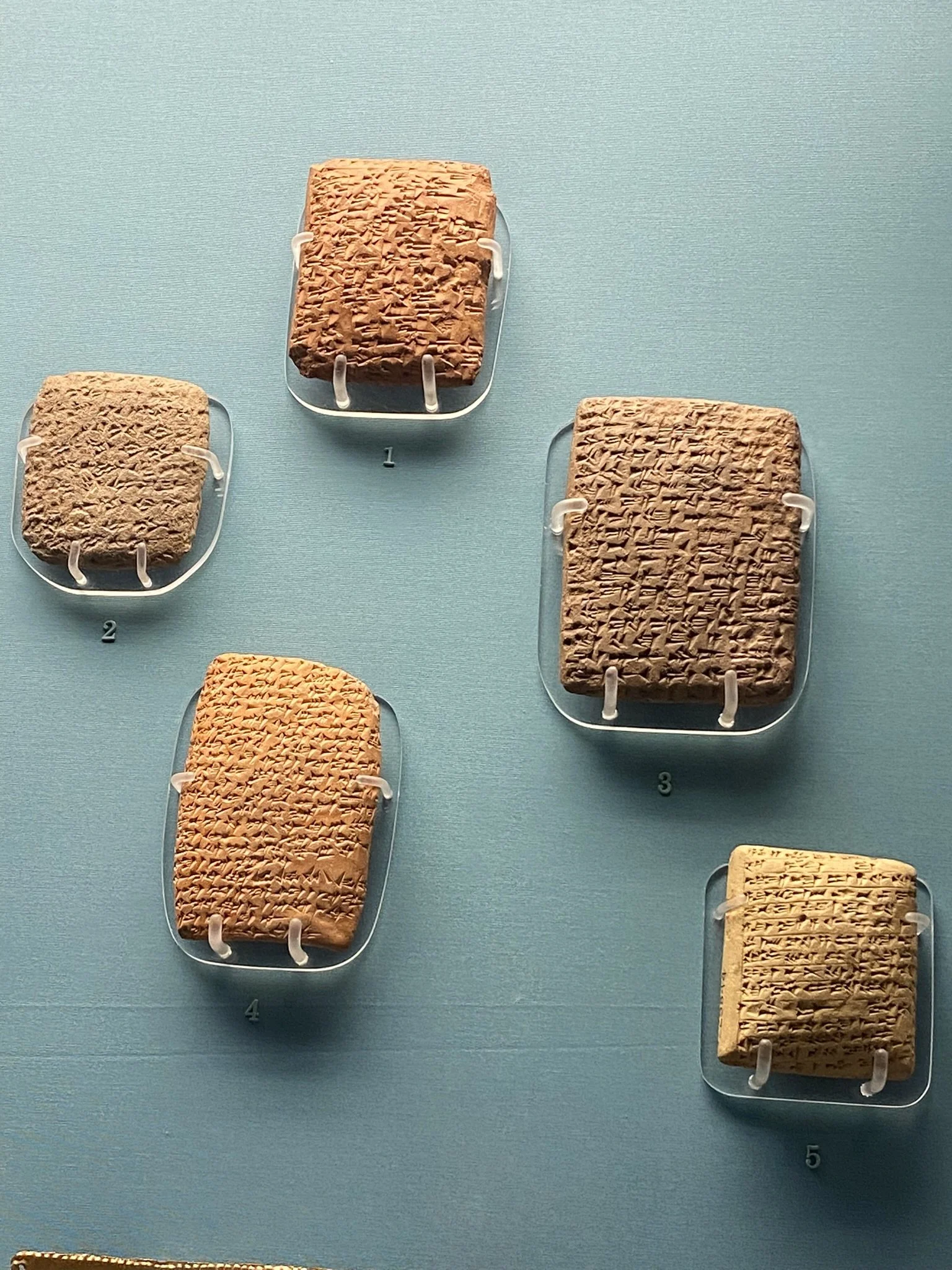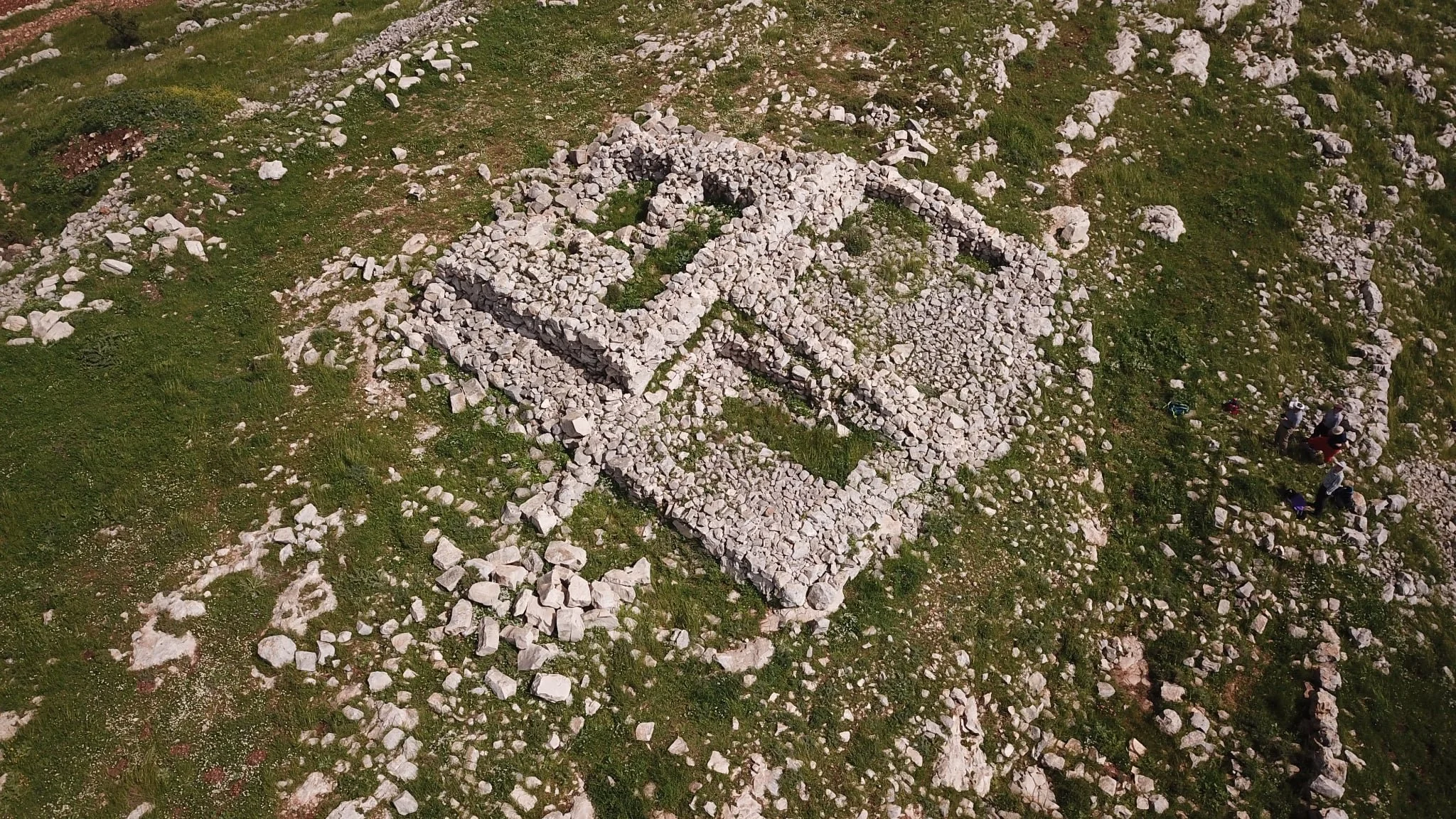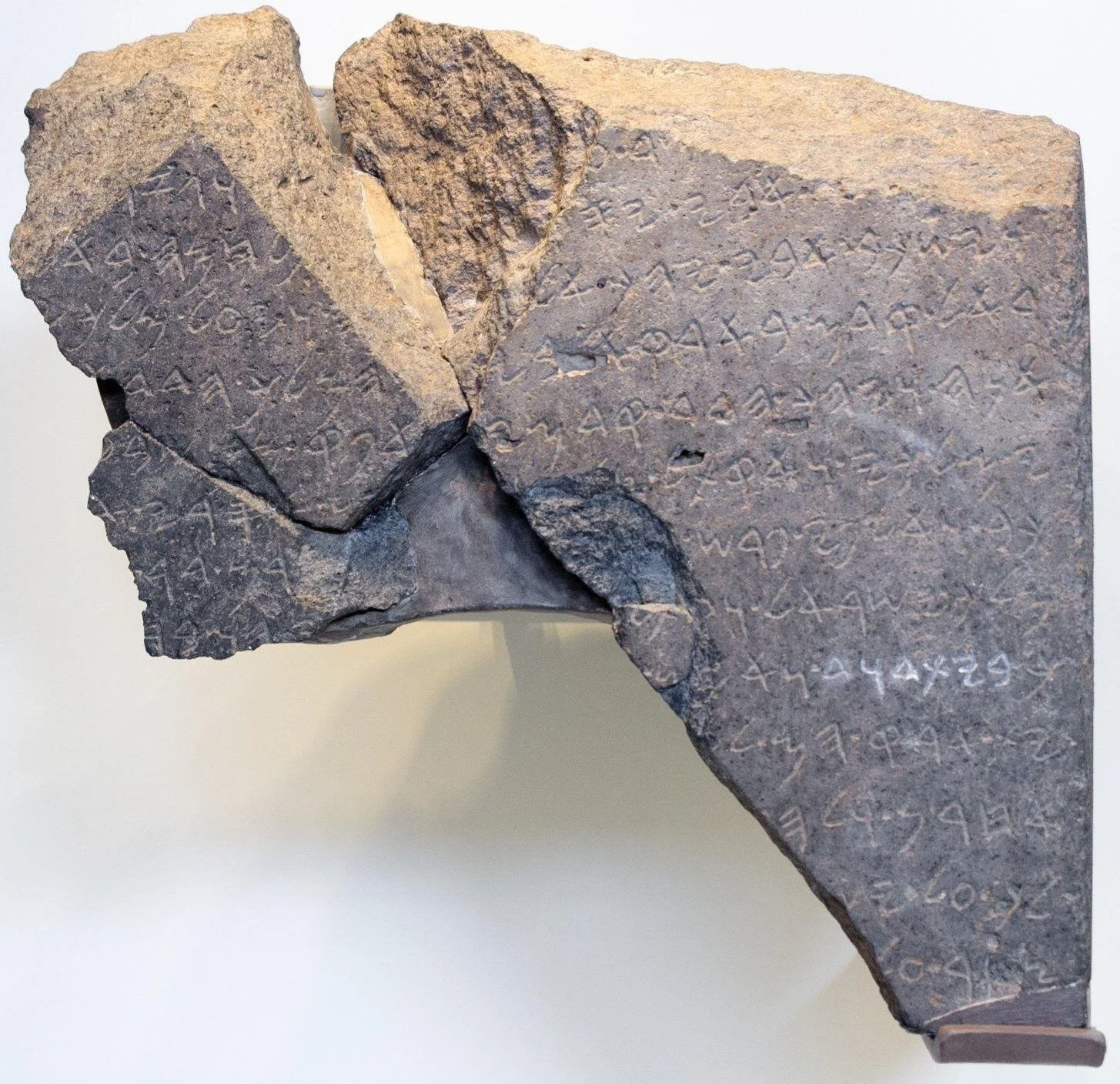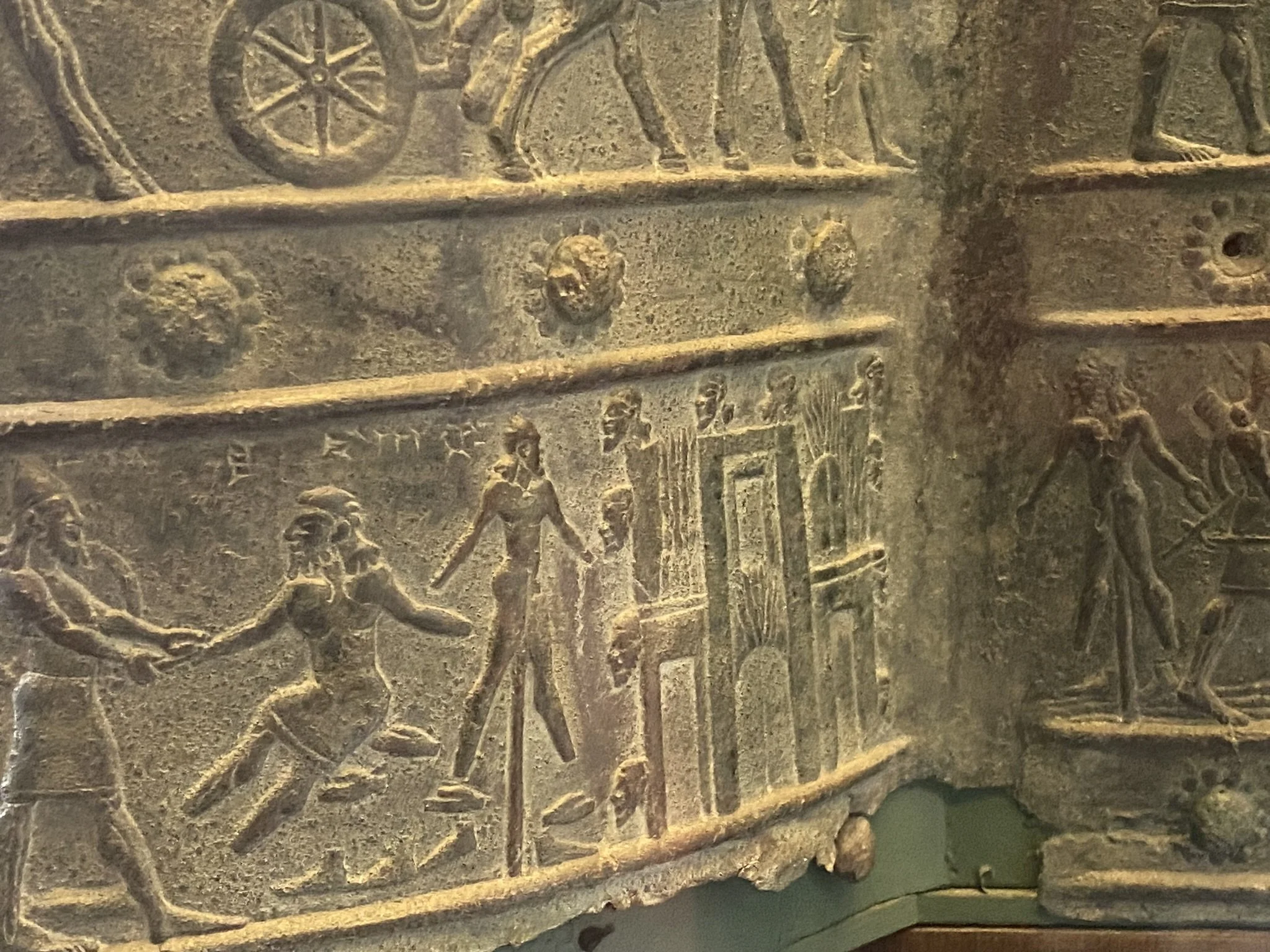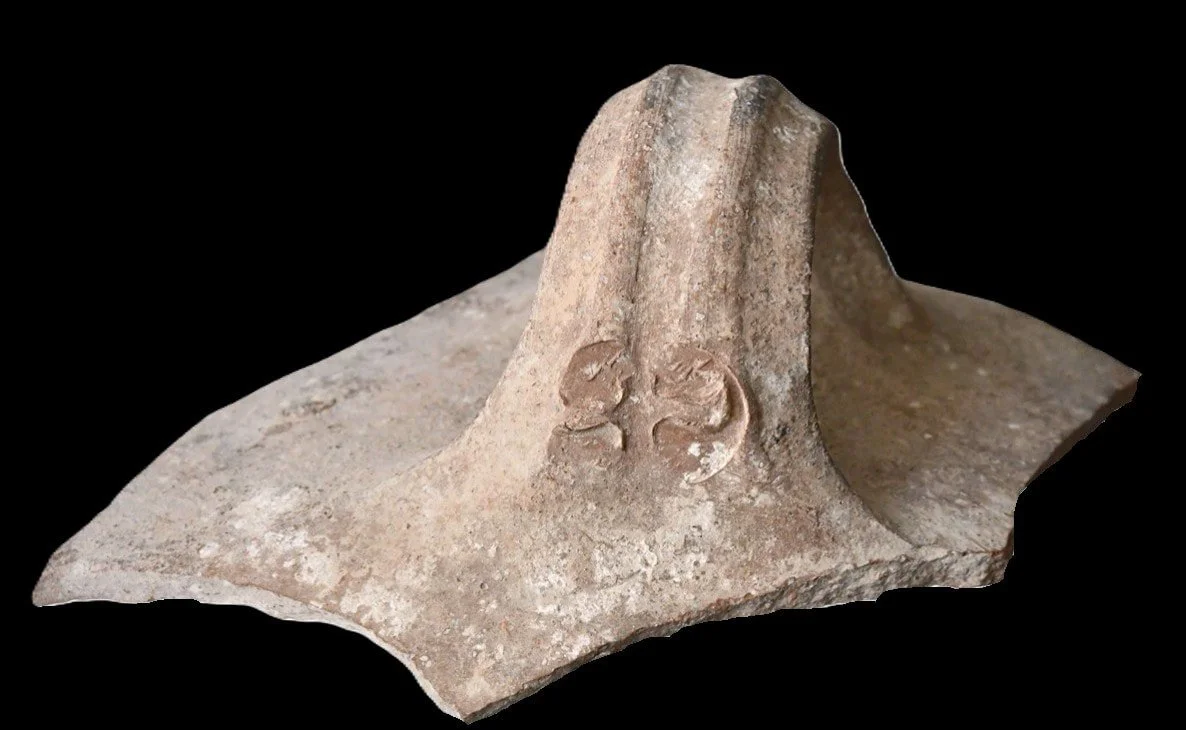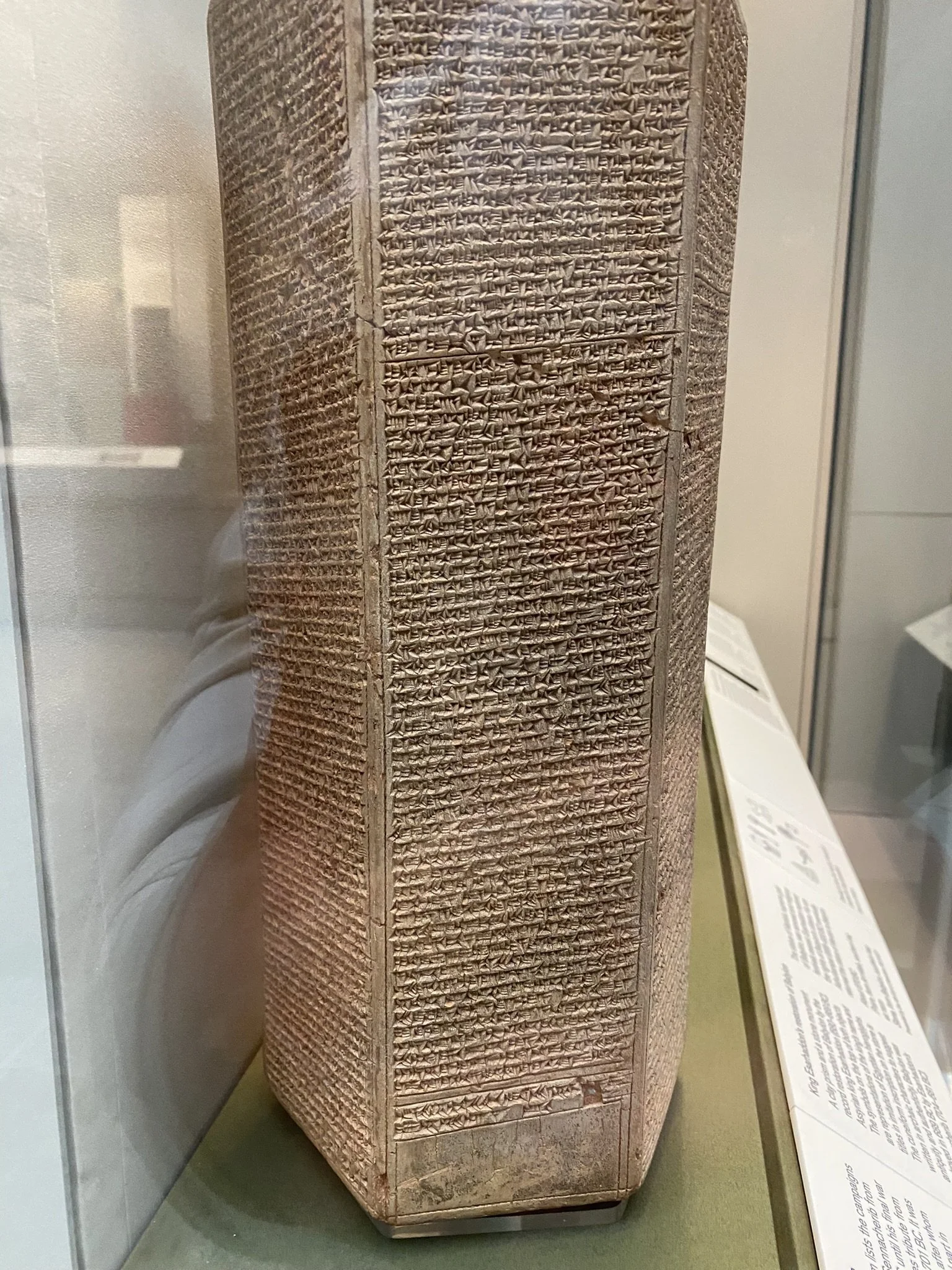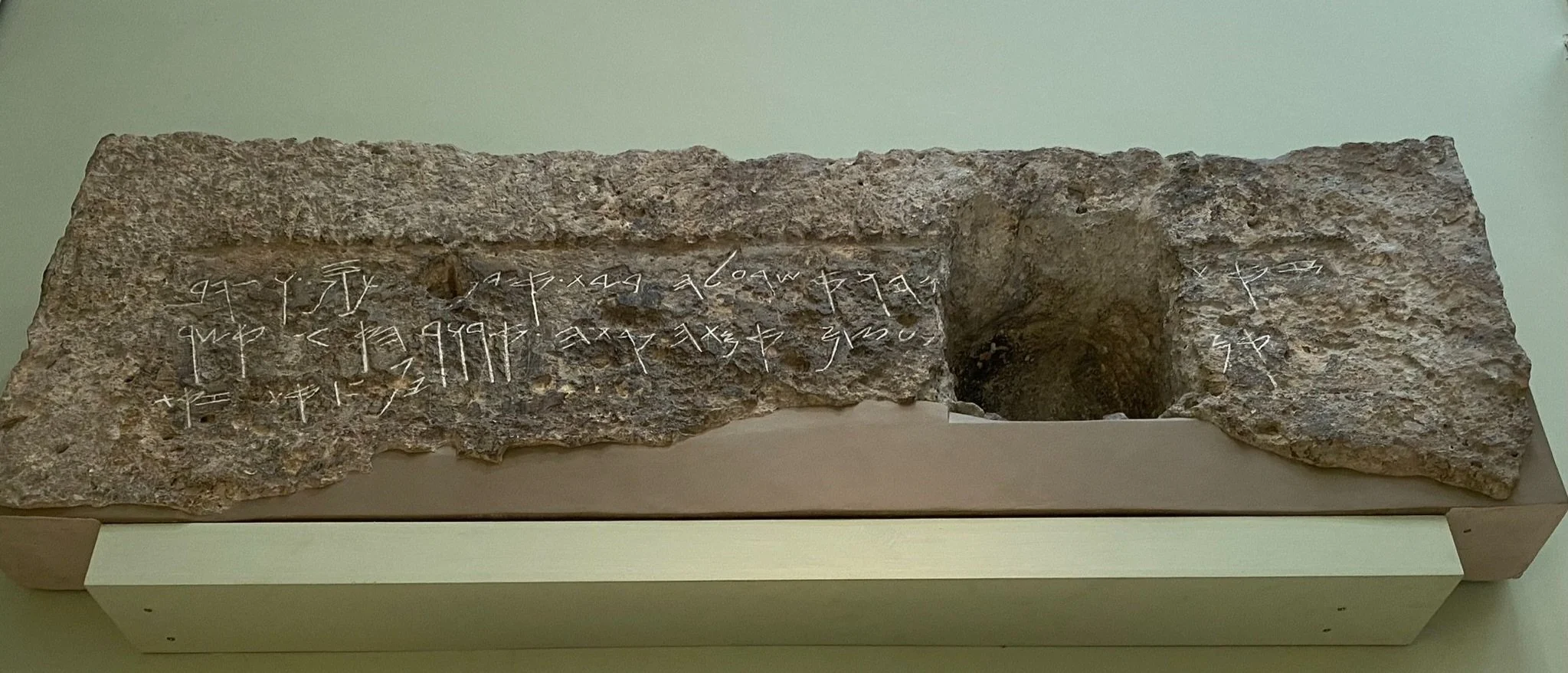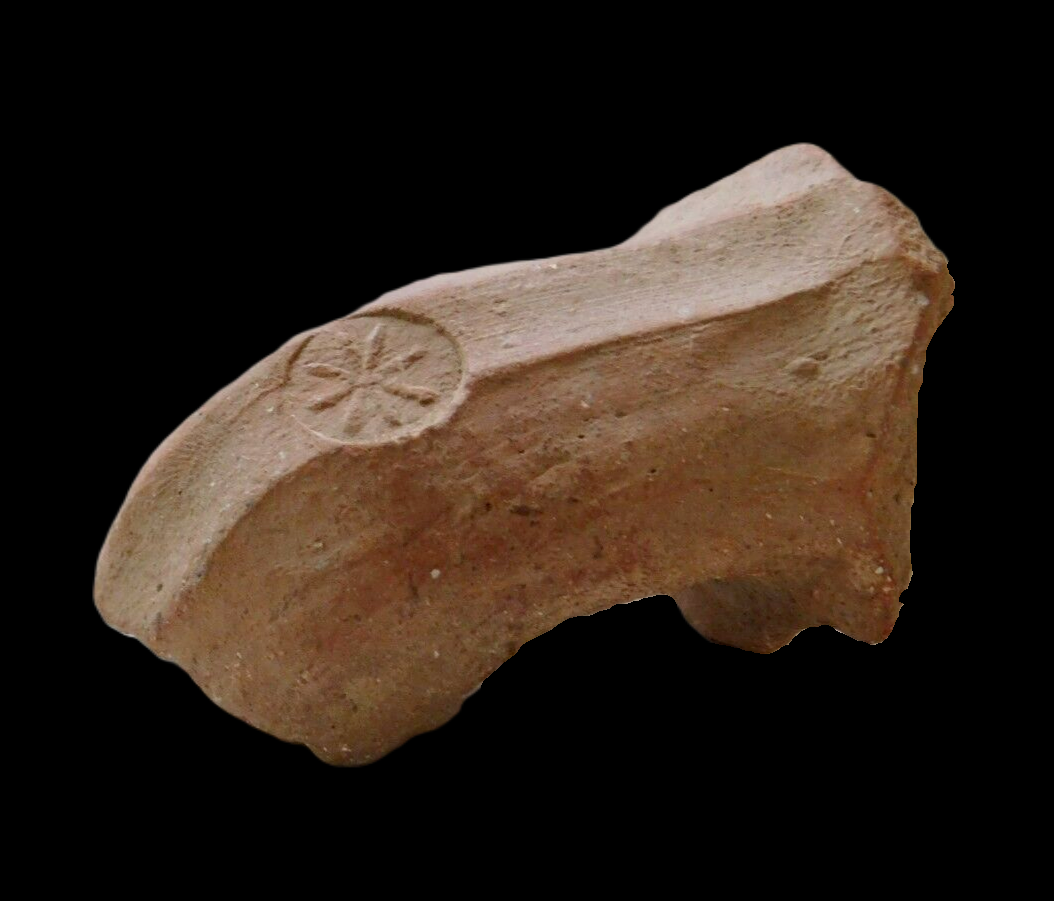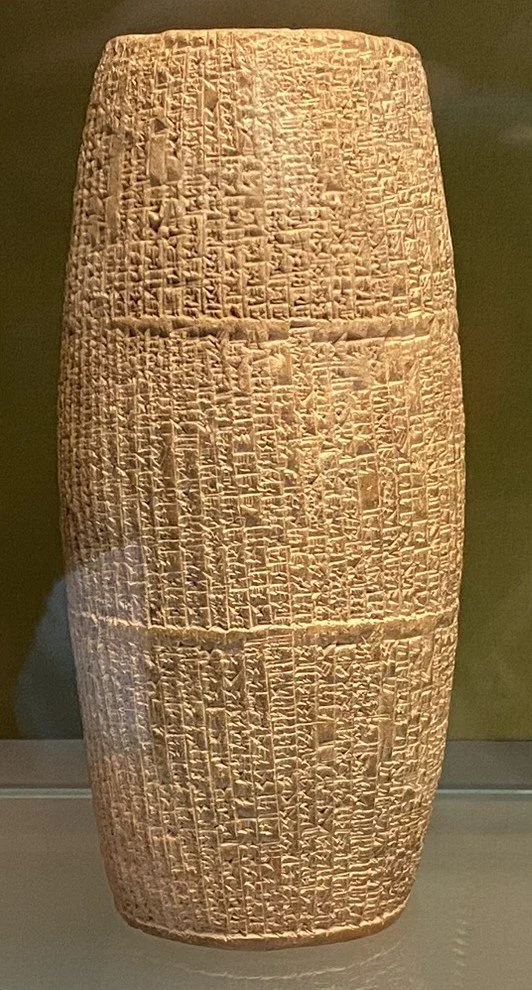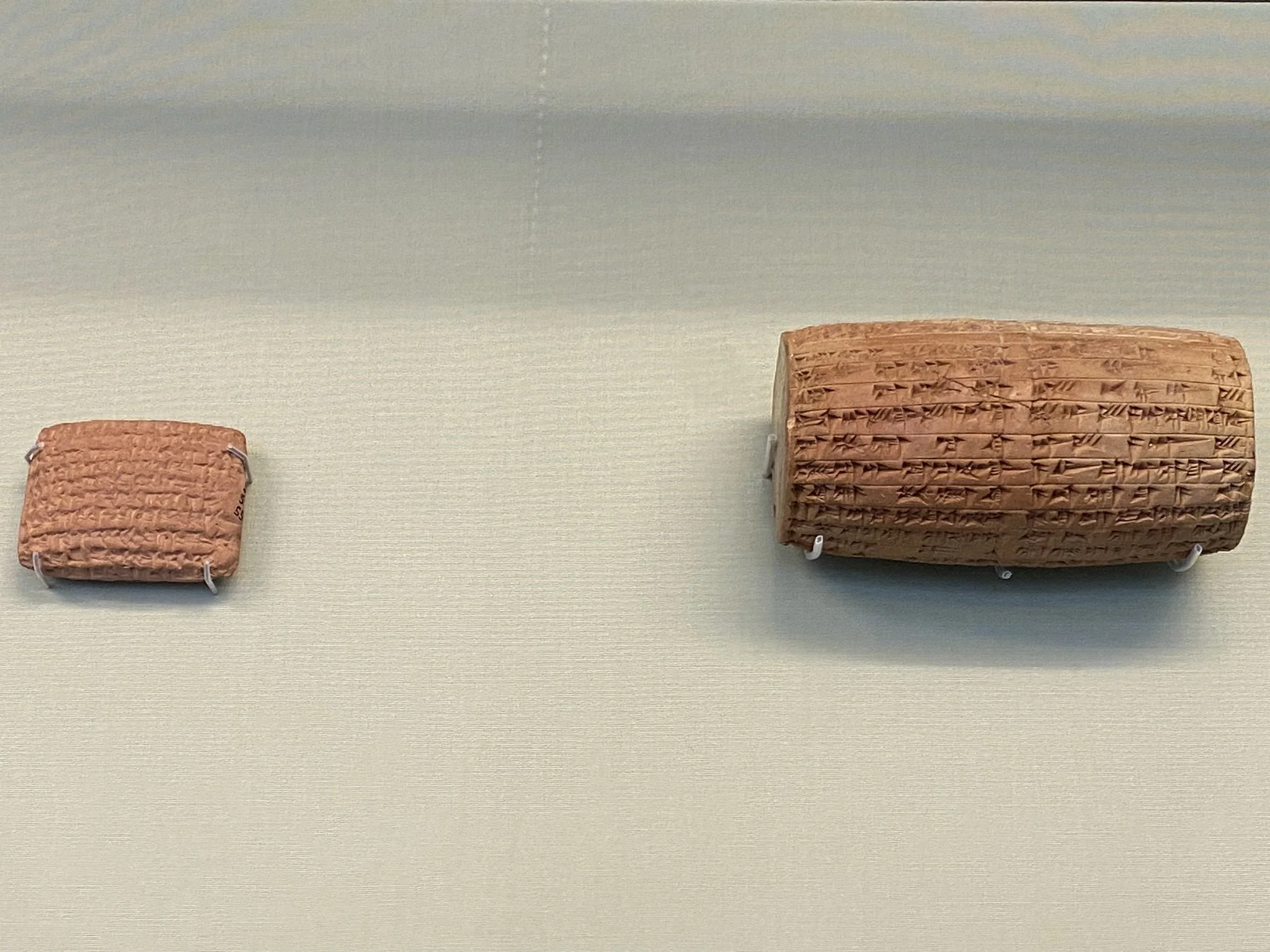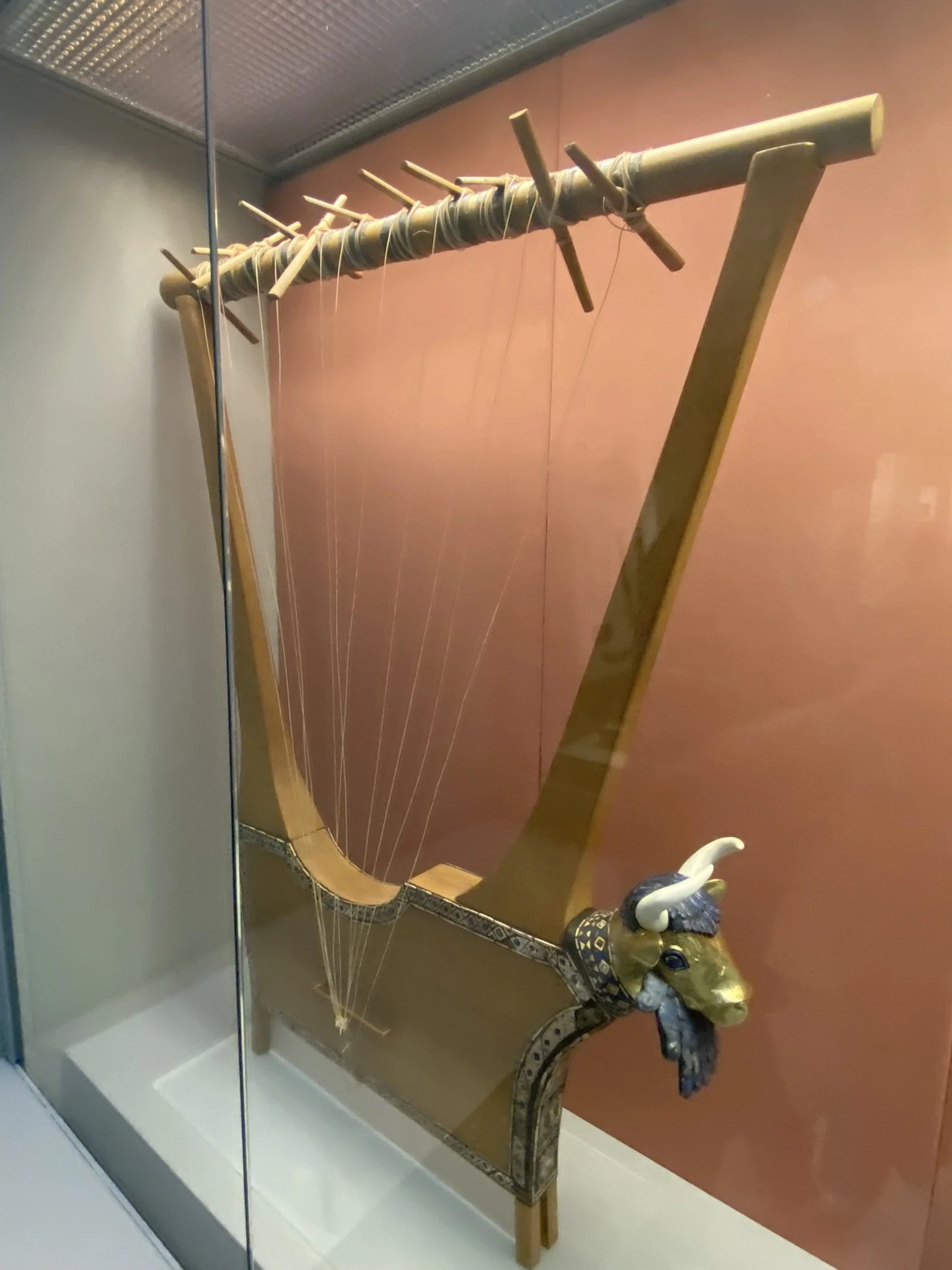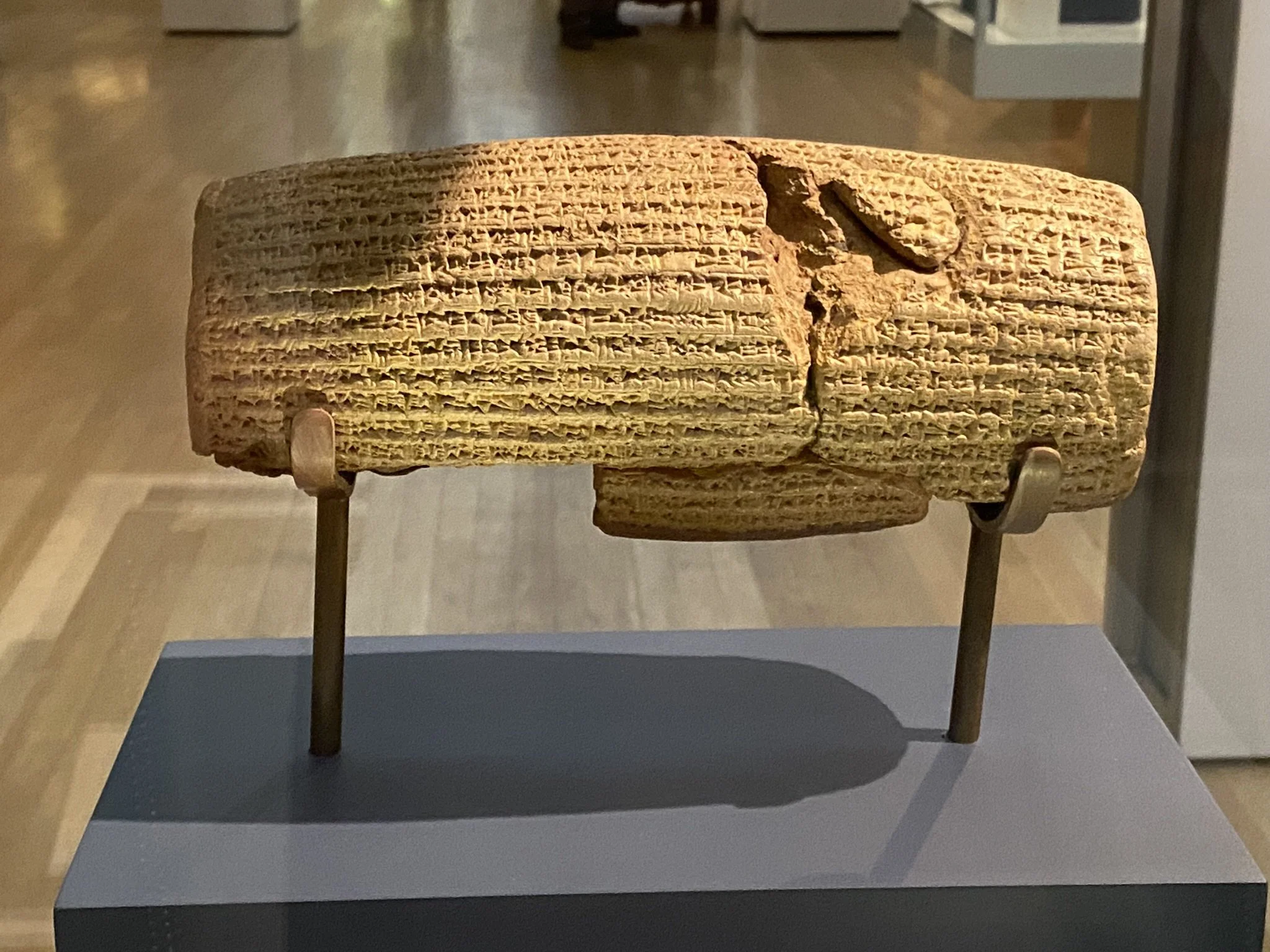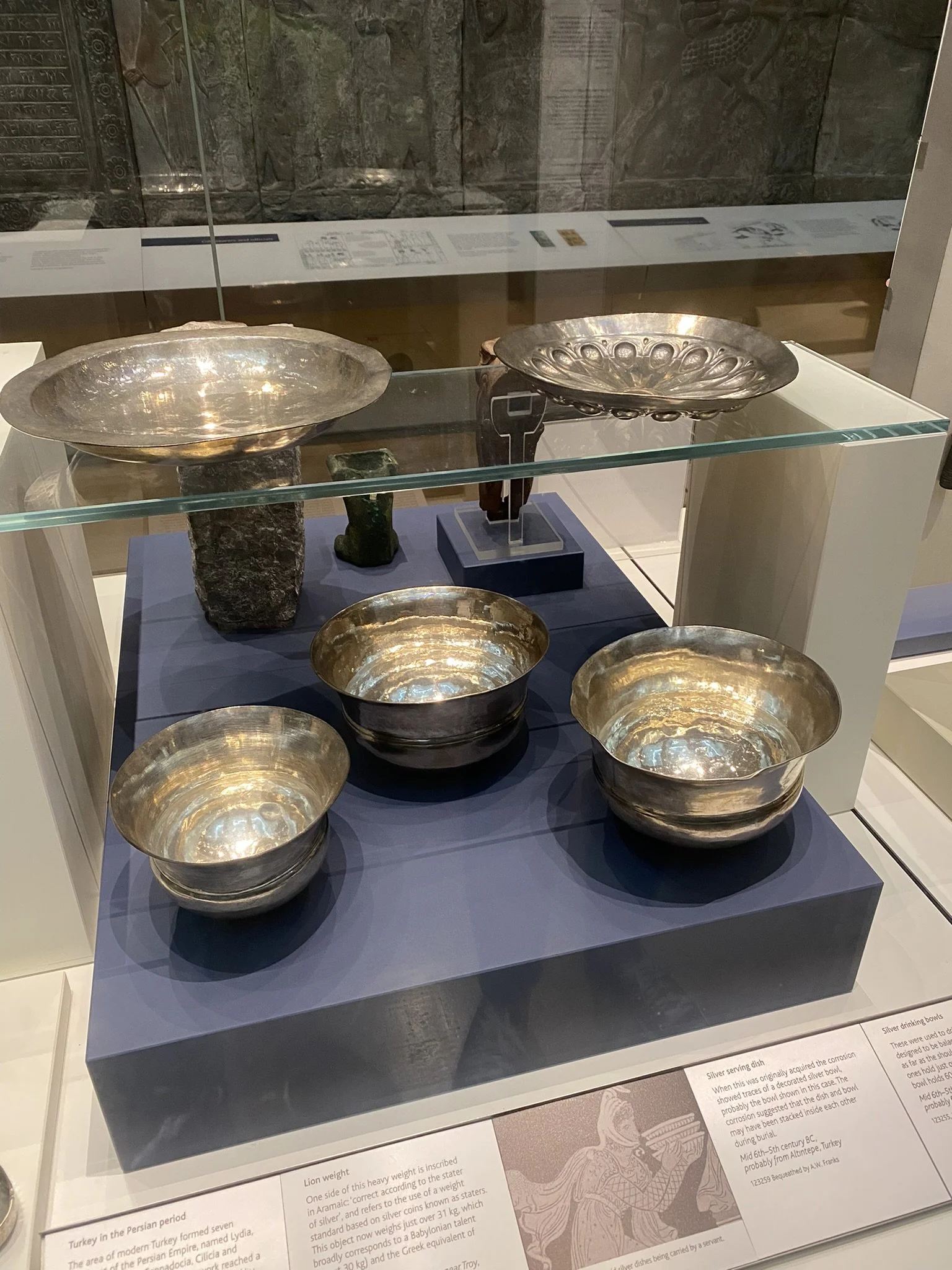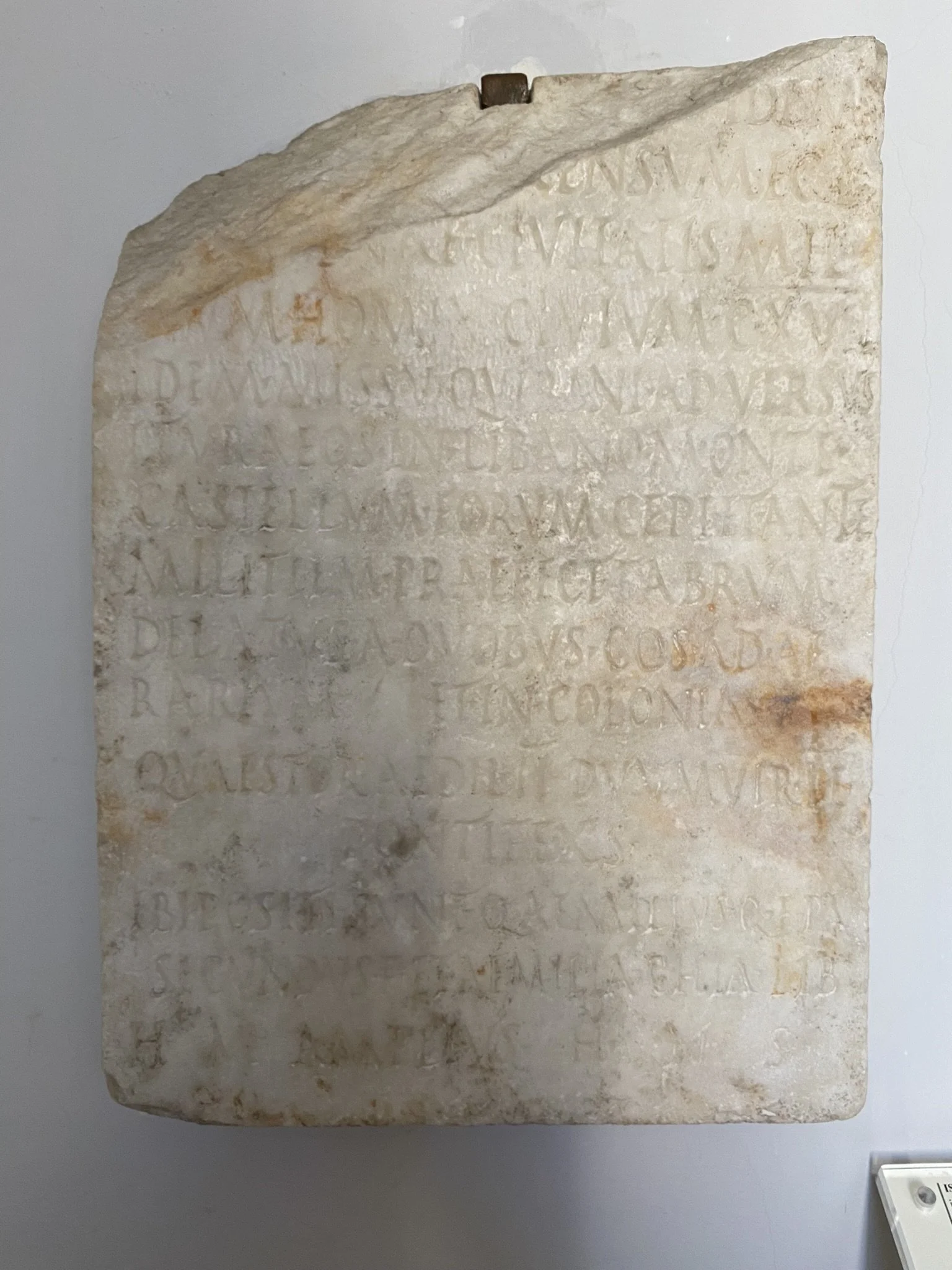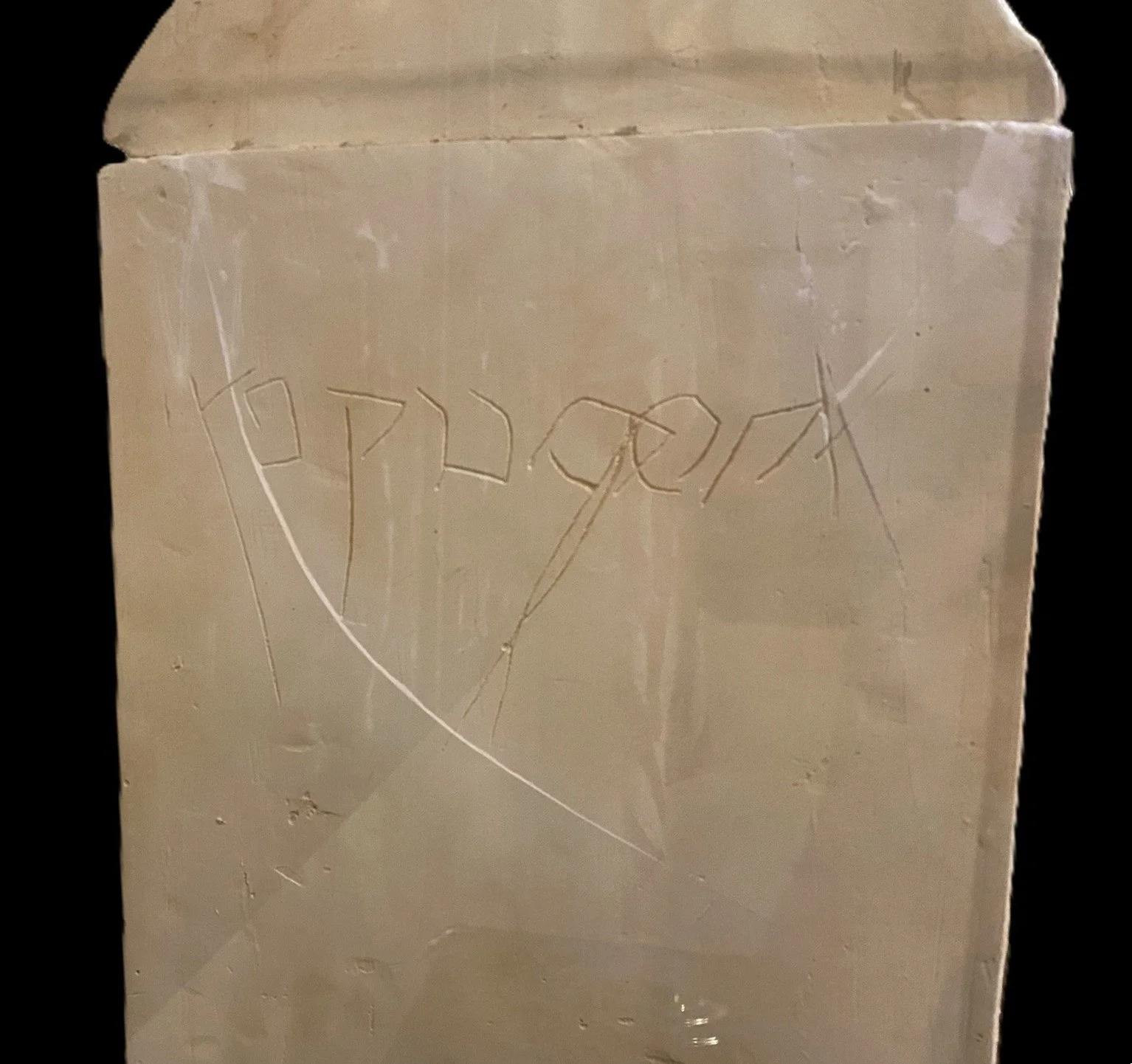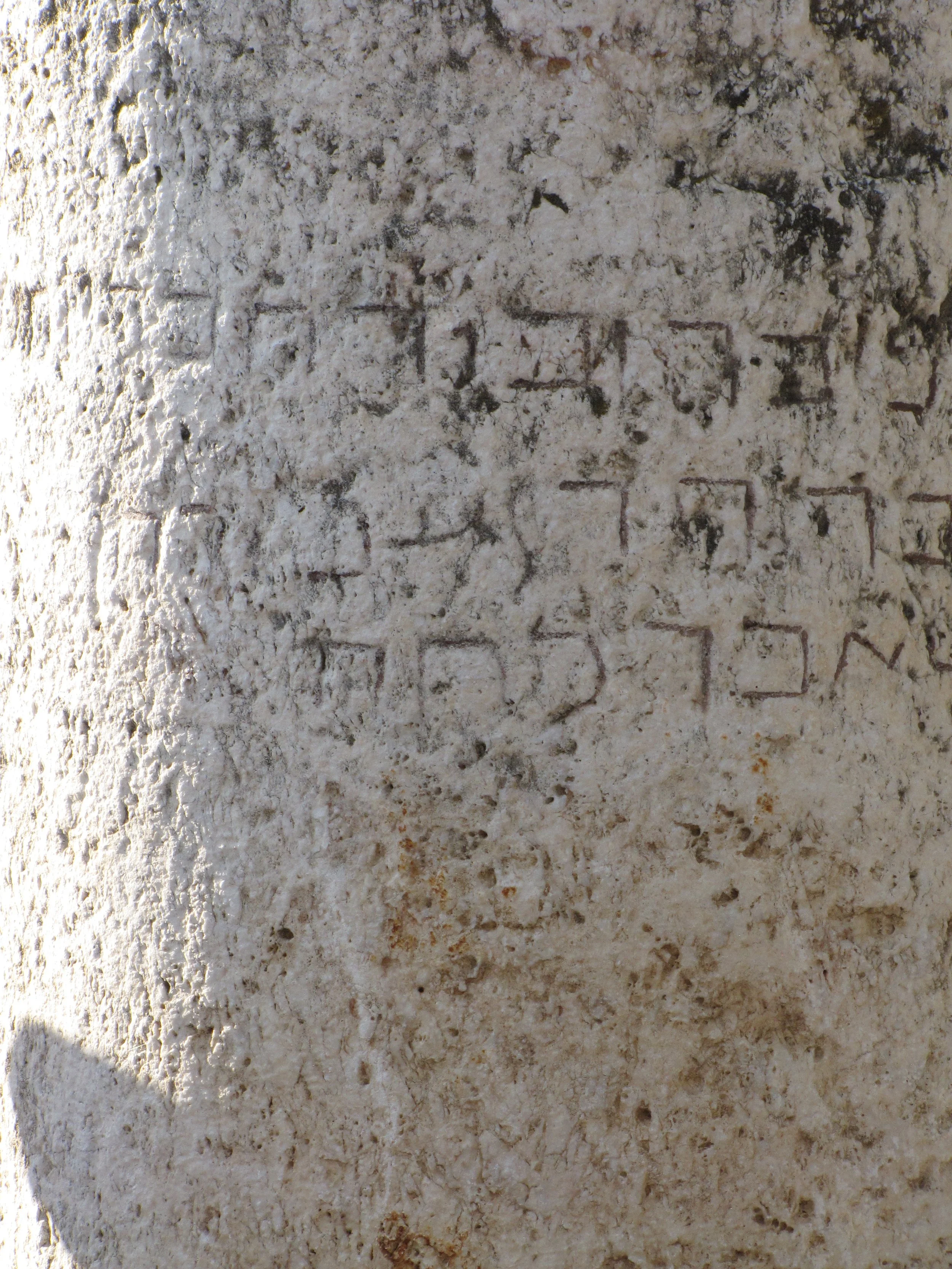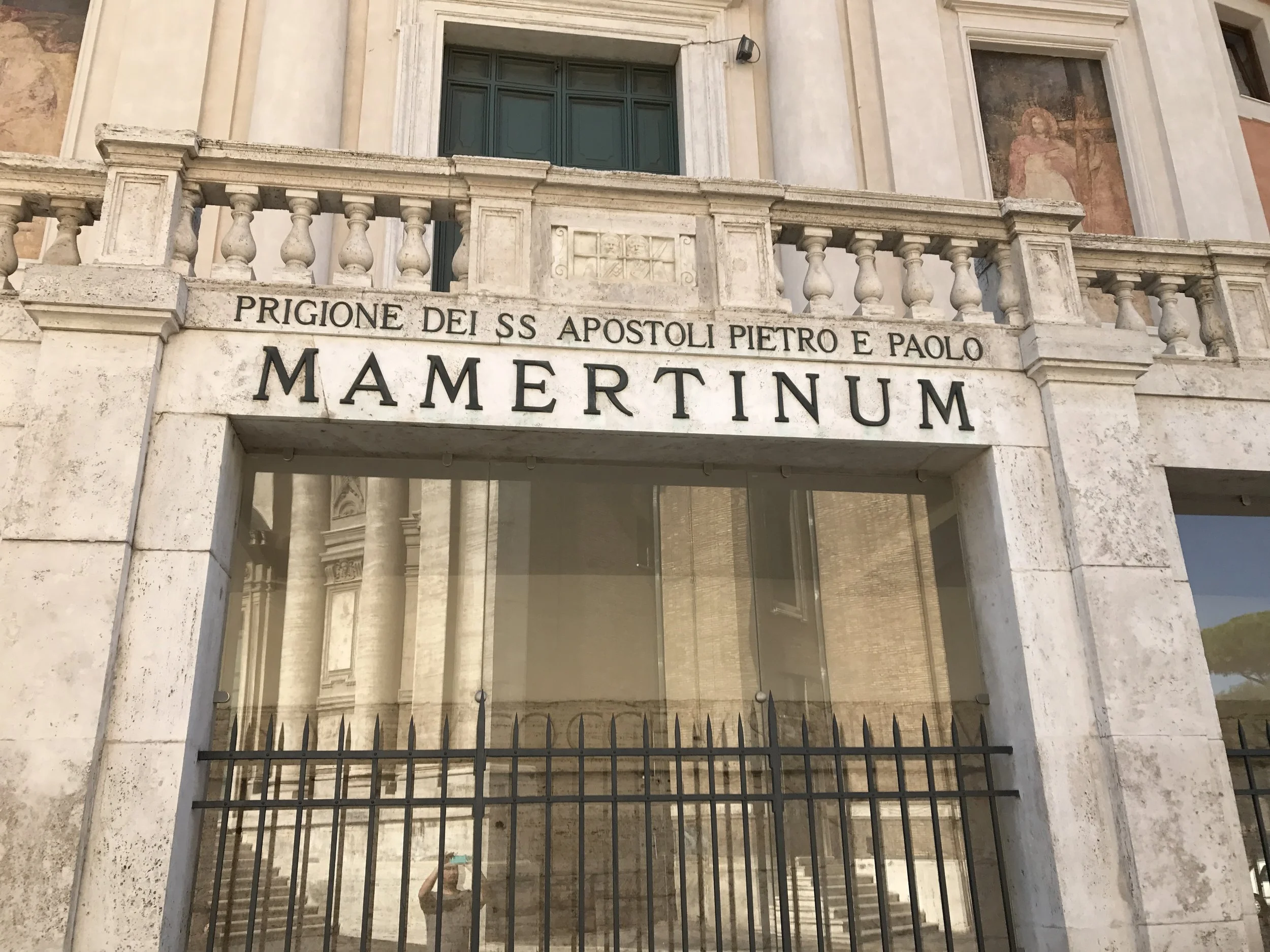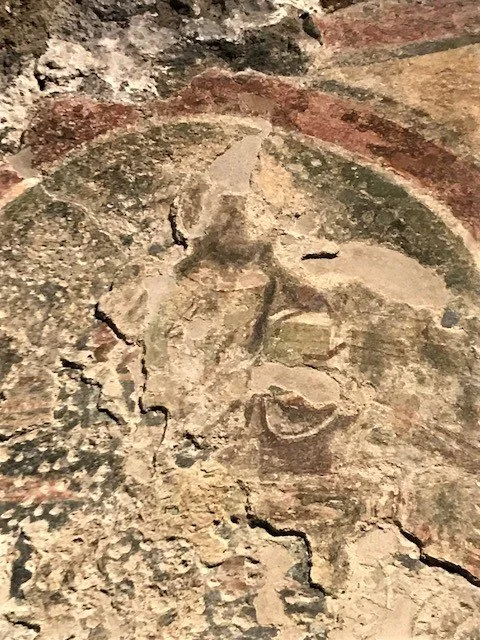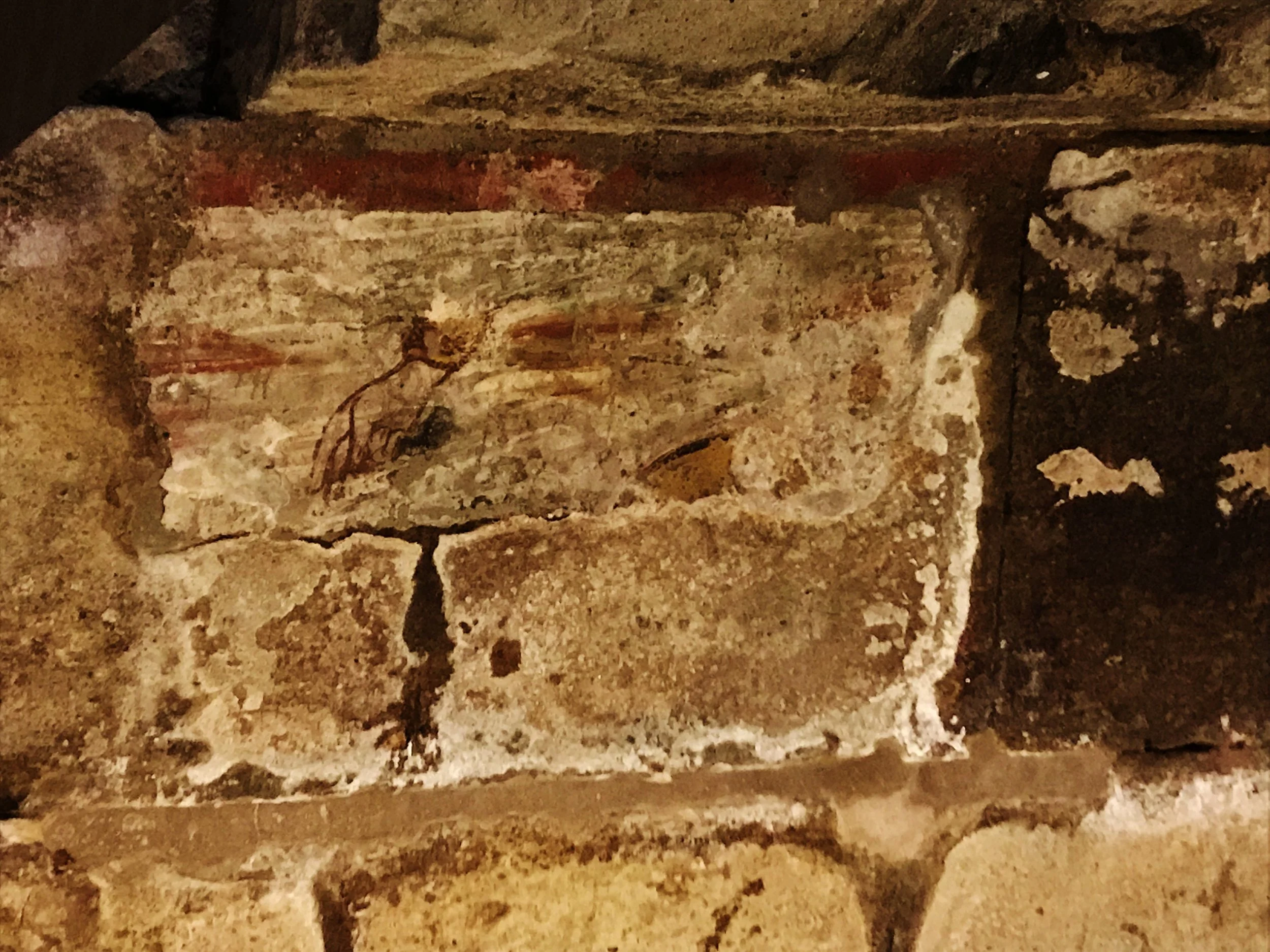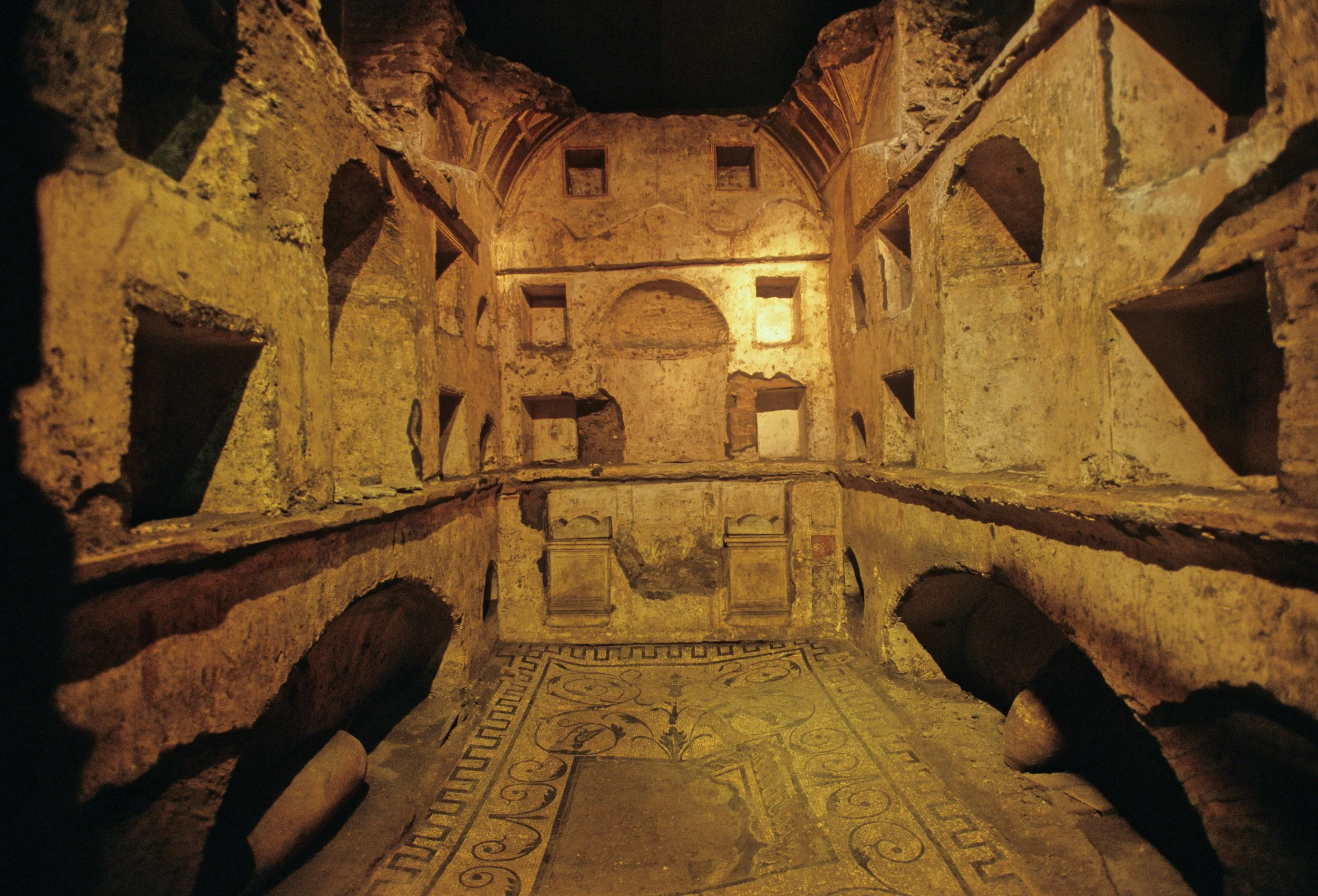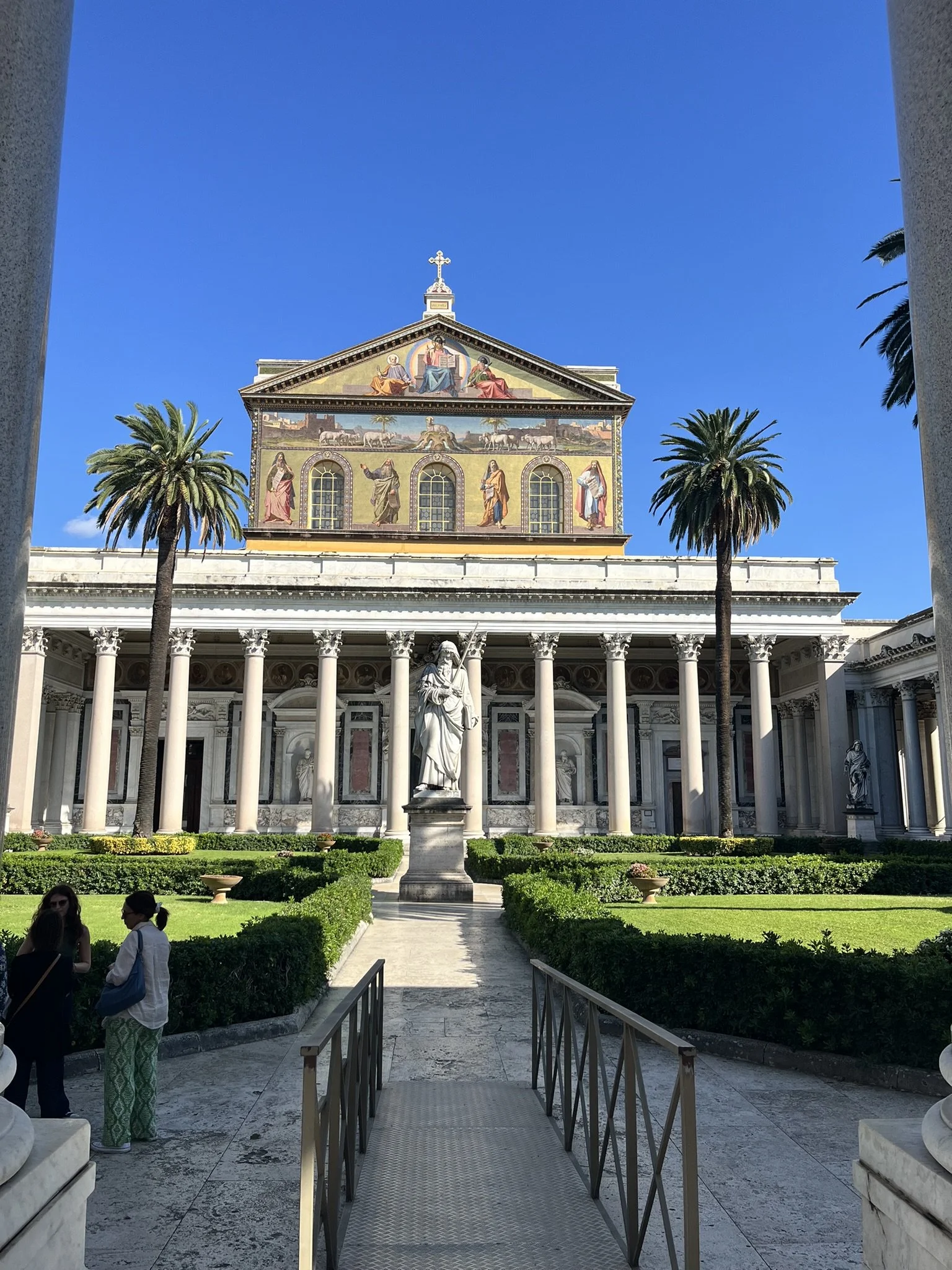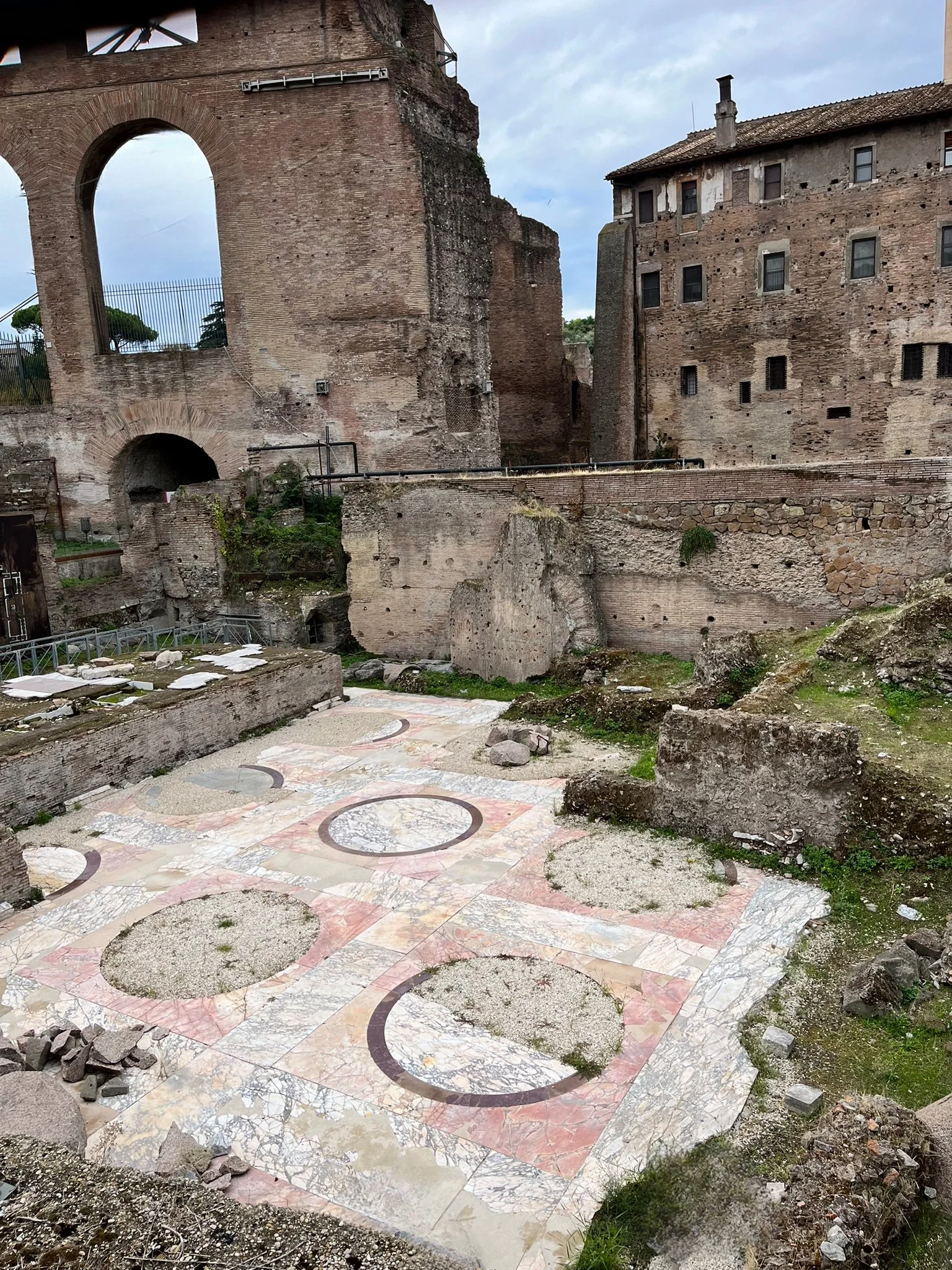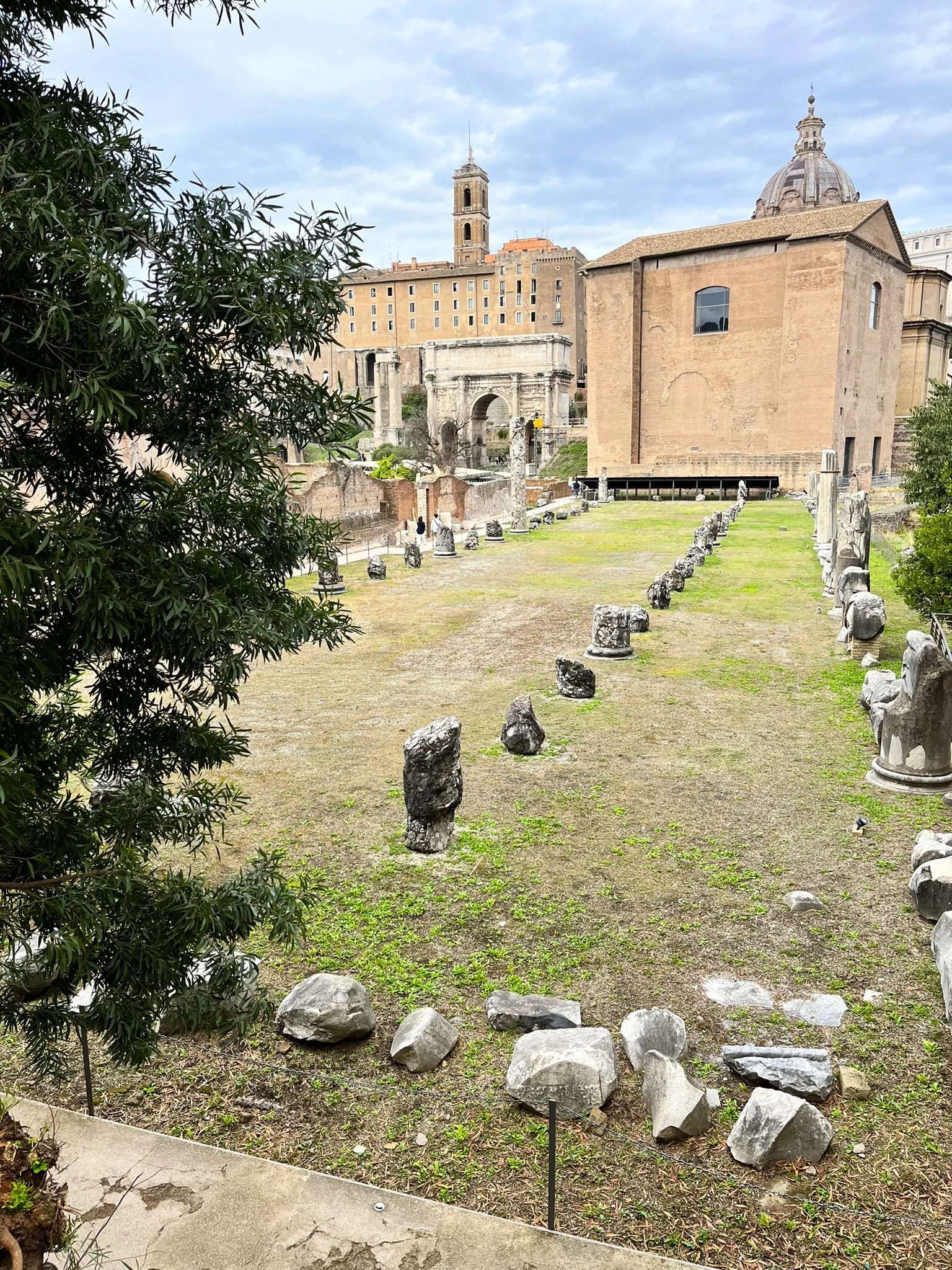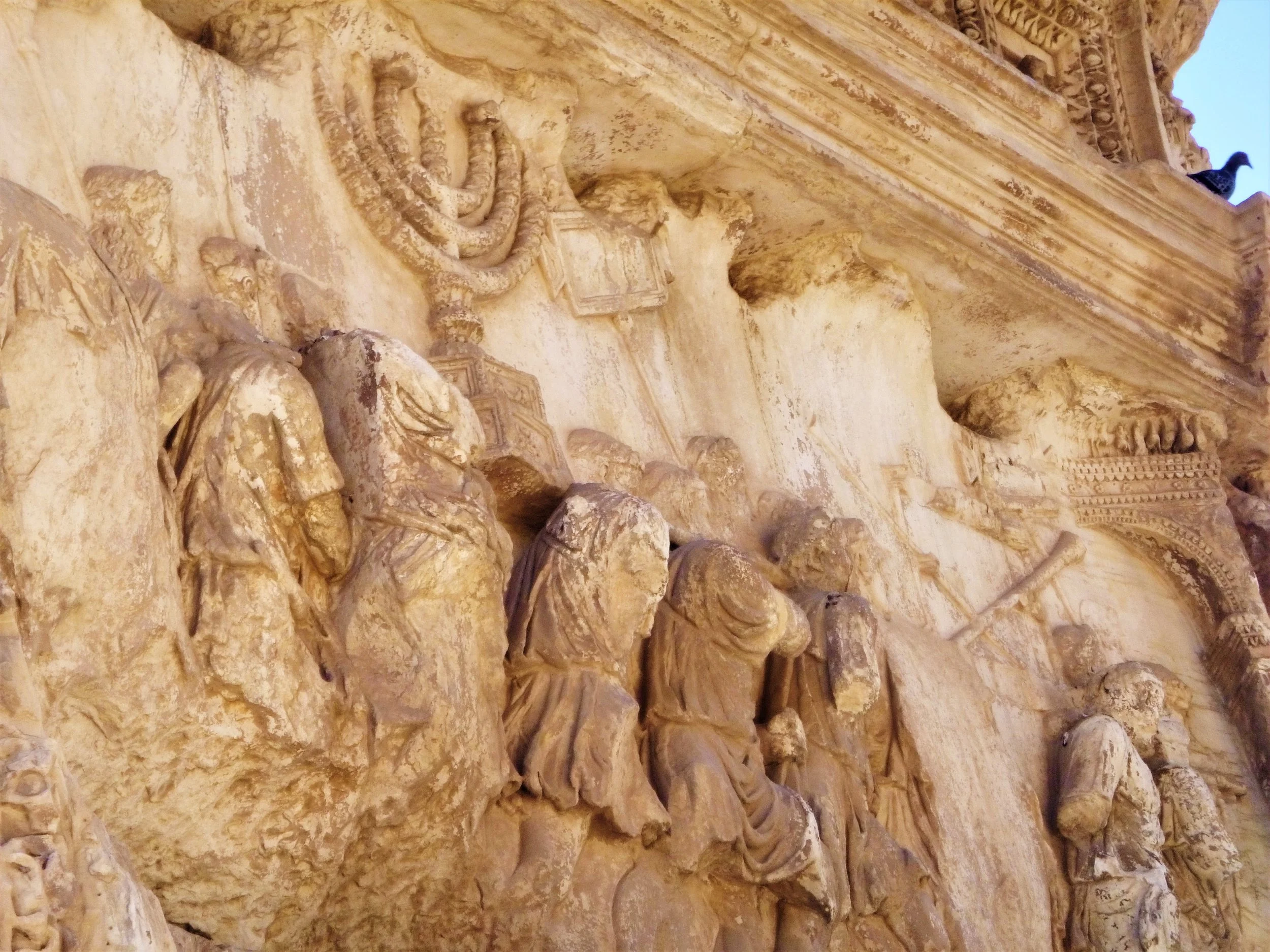This page is under construction.
It will feature important archaeological finds related to the Bible.
The original tablet in the British Museum.
There are a number of ancient documents that that provide a narrative of a global flood that has many similarities to the Biblical account. One such account is the Epic of Gilgamesh Flood Story. A replica of this narrative can be found in case two.
This Assyrian cuneiform tablet was written in approximately 700 BC. This tablet is humankind’s oldest reference to the great Deluge, outside of the Bible. The tablet shares several lines from the beginning of the Biblical Flood story, which is the forerunner of he Babylonian Gilgamesh Epic and the source of the Atra-Hasis Myth. According to the British Museum, this tablet (eleventh of the thirteen Gilgamesh tablets), is perhaps the most famous in the world. The tablet describes how the gods sent a flood to destroy the world. Like Noah, Utnapishtim is forewarned and builds an ark to escape and preserve living things. Humankind is destroyed while Utnapishtim survives, finally landing on a mountain called Nimush. After he flood he sends out birds to find dry land.
Excavated from the Nineveh Library of Ashurbanipal by A.H. Layard in the mid 19th century, commentators agree that the story hails from a a much earlier period, not long after the flood described in the story. One of the few kings of antiquity who could read and write, Ashurbanipal created an extraordinary underground library at Nineveh, where he gathered all ancient texts, tablets and literature available, dispatching emissaries as far as India, Egypt and Thrace. The Gilgamesh set was amongst the 50,000 tablets recovered. This Assyrian version of the Old Testament flood story was identified in 1872 by George Smith, an assistant at the British Museum.
“O man of Shuruppak, son of Ubartutu: Tear down the house and build a boat! Abandon wealth and seek living beings! Spurn possessions and keep alive living beings! Make all living beings go up into the boat. The boat which you are to build, its dimensions must measure equal to each other: its length must correspond to its width. Roof it over like the Apsu.
“You gods, as surely as I shall not forget this lapis lazuli around my neck, may I be mindful of these days, and never forget them! The gods may come to the incense offering, but Enlil may not come to the incense offering, because without considering he brought about the Flood and consigned my people to annihilation.”
The Epic of Gilgamesh, Tablet XI, “Belet-ili, Ishtar as the mother goddess, after the Flood.”
Zunkir, CC BY-SA 4.0 <https://creativecommons.org/licenses/by-sa/4.0>, via Wikimedia Commons
Enmerkar & The Lord of Aratta
This cuneiform document was written before 2000 BC and describes how a giant Ziggurat (tower) was being built to reach the gods in heaven. Having been written in Mesopotamia, where the Biblical Tower of Babel was built some believe that the Tower of Babel is none other than the great Ziggurat located in Ancient Ur.
Photo of the Brooklyn Papyrus
Egypt 664-332 BCE, No restrictions, via Wikimedia Commons
This papyrus dates to 1700 BC, just before the time of the Israelite enslavement in Egypt. It contains a list of 95 names, all of whom were Egyptian servants. Many of them are clearly semitic. Some of them even take the feminine form of the 12 tribes. For example, Aqoba (Jacob), and Sekera (Issachar). Included on the list is a woman named Shiphrah.
After Pharaoh told the midwives to kill all the new born Hebrew males, there were two who feared God. “But Shiphrah and Puah had respect for God. They didn’t do what the king of Egypt had told them to do. They let the boys live.” Exodus 1:17
See Unearthing the Bible by Titus Kennedy for more information.
The Admonitions of Ipuwer
Rijksmuseum van Oudheden, Public domain, via Wikimedia Commons
The Admonitions of Ipuwer is a Poem written by an Egyptian. The oldest version we have comes from 1300 BC, but the nature of the writing suggests that it was written much earlier. The Poem laments the presence of foreign rulers in Egypt and the disasters in which Egypt has experienced. It states that the slaves are now wearing the jewelry of the nobles. Additionally, it notes that the land has been stripped bare by hail and fire, the animals have been killed, fruit baring trees have been stripped (by what sounds to be locusts), and the Nile is blood.
Could this be a reference to the ten plagues? I am not sure, however, it is interesting.
Image 1:A.D. RiddlePhotograph of a 2-Dimentional object which is in the Public Domain, hence PD-Art appliesImage 2: Brown UniversityPhotograph of a 2-Dimentional object which is in the Public Domain, hence PD-Art appliesImage 3: Macquarie UniversityPhotograph of a 2-Dimentional object which is in the Public Domain, hence PD-Art applies, Public domain, via Wikimedia CommonsTomb of Khnumhotep II Beni Hasan Egypt
Age: 1870 BC
This image is found in a tomb and depicts an influx of “Asiatics,” moving into Egypt. Although slightly before the time of Joseph, we know that people from the levant had been immigrating to the Nile Delta. Oftentimes, this was due to episodes of drought and food shortages. Given the consistency of the Nile inundation, the Nile Delta was a fairly consistent source of food.
Photo: Head of the Avaris Statue
“Photo courtesy of the Madain Project.”
Photo: Rendering of the Avaris Statue
“Photo courtesy of the Madain Project.”
Photo: Head of the Ebia Statue
“Photo courtesy of the Madain Project.”
Photo: Portion of the Avaris Statue. Note the coloring and compare it to the painting in the Tomb of Khnumhotep II.
“Photo courtesy of the Madain Project.”
The Avaris and Ebia Statues
Dating to the time when Joseph was in Egypt, two statues have been found of an “Asiatic dignitary.” Typically large statues were only created for royalty and high-profile dignitaries; therefore, it is interesting to have a royal sized statue of a man of Asiatic decent. To further the story, one of the statues was found in Avaris, which is recognized as being a major city comprised of mostly western Asiatics (the area of modern day Israel, Lebanon, and Syria). This city was comprised of a large palace and several four roomed houses which is typical of an Israelite settlement. The cities name was later changed to the City of Rameses.
Therefore, we have indications of Israelite settlement in Egypt, with an Asiatic male who obtained high ranking in the Egyptian government during the time that Joseph was in Egypt. Some archaeologists and historians think that this statue could, very well, be of Joseph.
Consider, also, that several scarab seals with the name of Jacob-HR, have been found, many of which were found in Avaris. Joseph’s father just happened to be named Jacob (Israel).
Harry Reginald Hall (1873-1930), Public domain, via Wikimedia Commons
Jacob-Hr seal.
Between 1630 to 1530 BC, Egypt was ruled by foreigners named the Hyksos (see the Hyksos seal in case one for more information). These rulers were Semitic, meaning that they came from the land that is modern day Israel. This is around the time that Jacob’s son Joseph was sold into Egyptian slavery and would eventually become a ruler. Although not much is known of these Hyksos leaders, we know of one very important person because 30 of his royal scarabs have been found. The name, written on the scarabs is Yaqub-har. “Yaqub is the exact transliteration of the Semitic name Jacob.” Although we do not know if this is Jacob, the father of Joseph, the date, location, and people group fits very nicely. In fact, 9 of these Jacob HR scarabs were found in ancient Avaris, in Egypt. Avaris is an ancient Egyptian city that was clearly occupied by a semitic people. Those 9 scarabs were found in a large palace like structure near a large statue of a semitic male (see the Avaris and Ebia statues above). Large sculptures were typically reserved for those in the royal family or high ranking officials. Could this statue be of Joseph?
See the article by archaeologist Christopher Eams, The Hyksos: Evidence of Jacob’s Family in Ancient Egypt? Published on the Armstrong Institute of Biblical Archaeology website.
See a replica in Case One.
Photo and Drawing of Sinai 361
Romain Butin - Wikidata (1871-1937), Public domain, via Wikimedia Commons
Sinaitic & Serabit-el-Khadim Inscriptions.
During the Israelite enslavement, the Egyptians operated a turquoise mine in Serabit El-Khadim. Inscriptions written on stone have been found; and based upon the type of writing, it stems from the time of the enslavement. According to Dr. Petrovich, who has a Ph.D. in Syro-Palestinian Archaeology with a minor in Middle & Late Egyptian, and Near Eastern Religions, this inscription mentions Moses. Although his research has been met with controversy, his interpretation of the inscriptions have turned up some very interesting readings. For example, inscription 361 has been translated as
“Our bound servitude had lingered. Moses then provoked astonishment. It is the year of astonishment because of the Lady.”
Other inscriptions have been found in this area and even inside the mine. Interpretations of these texts may include the following:
Sinai 115 may mention Shechem and the city of Bethel. It may also refer to Josephs sons Manasseh and Ephraim.
Sinai 358 may be a second mention of Moses.
Sinai 376 may mention Joseph’s wife, Asenath.
Sinai 375a may mention Ahisamach who was an overseer of minerals. A person of the same name was tasked with designing and building the Tabernacle.
I hope that the readings stand, but it is best to await further findings and research to come out on these readings. Nonetheless, these readings have come from professionals like Dr. David Petrovitch and Dr. Peter Van Der Veen.
Tel El-Yehudiyeh
According to Anat Chohen-Weinberger of the Israel Antiquities Authority “Tell el-Yahudiya ware refers to a distinct group of pottery named after the site of Tell el-Yahudya in the Egyptian Nile Valley.” The form is not common amongst pottery created by Egyptians. The pottery has been found in the Middle Kingdom (when Joseph would have went to Egypt) throughout the Hyksos Period to the New Kingdom, disappearing around 1530; a bit later than the date of the Exodus. The renowned archaeologist Flinders Petrie believe that the pottery originated outside of Egypt, in the area of Canaan. The primary feature of Tel El-Yahudiyeh Pottery are the puncture marks on the outer surface.
In summary, these jars became popular in norther Egypt during the time that Joseph was in Egypt. They are unlike many pottery types in Egypt at the time. The greatest concentration of these vessels were found in a location called Tel El-Yehudieh which means mountain/mound of the Jews. The area was occupied by semitic people including the Hyksos (see the Hyksos seal for more information), whom became rulers over the norther region of Egypt. Once the Hyksos rule ended, the semitic people were placed into slavery until 1567 BC, the date of the Exodus. It was around this time that these pottery types disappear.
This item is in Case One
Photo of the Dream Stele
Chanel Wheeler, CC BY-SA 2.0 <https://creativecommons.org/licenses/by-sa/2.0>, via Wikimedia Commons
Rendering of the Dream Stele
Carl Richard Lepsius, Public domain, via Wikimedia CommonsThe Dream Stele
Based upon Biblical Chronology, we know that Thutmose III was the Pharaoh of the enslavement, Amenhotep II was the Pharaoh of the Exodus, and Thutmoses IV was the Pharaoh after the Exodus. In the ancient writings we learn that Amenhotep II was not a first born male in his family. This is important because he did not die in the tenth plague where the first born males died. We also learn that Amenhotep II’s eldest son did not rise to the throne because he died very early, leaving a step-brother, Thutmoses IV, to ascend to the throne. This is documented on the Dream Stele that sits between the paws of the great Sphinx.
It is interesting that the Body of Amenhotep II may have been found. A pathological evaluation found that his body was covered in small tubercles , which was very unusual. Could this have been the result of the boils on the skin from the sixth plague?
See the Thutmoses Scarab seal in Case one for more information.
Image of the Semna Stele of Usersatet
Alain Guilleux / Alamy Stock Photo
Semna Stele of Usersatet
As noted elsewhere, based upon Biblical Chronology, we can identify the Pharaoh of the Exodus as Amenhotep II, which is verified by a third century BC Egyptian historian named Menetho, which gives the name of the Exodus Pharaoh as Amenophis (the Greek form of Amenhotep). We learn that Amenhotep II made one very large raid into the Levant, which is drastically different than his father who made many raids. Some wonder if Amenhotep’s effort was to regain his lost slave base. This stele tells about Amenhotep’s raid in the Levant.
U0045269, CC BY-SA 4.0 <https://creativecommons.org/licenses/by-sa/4.0>, via Wikimedia Commons
Egyptian Execration Texts
These texts list the names of cities, tribes, people, and regional identifiers. Excavated in Saqqara and written around 2000 BC, some of these texts mention Jerusalem, Laish, a man or tribe named Zebulun, a man or tribe named Abraham, and a man named Job. Of course we cannot say with certainty that these people are those found in the Bible, however, we can say that these names were in use at the time.
Contributor:
espixx /Alamy Stock Photo
Tomb of Rekmire from 1450 BC
Pictured in this Egyptian tomb is a painting of “Asiatic” slaves making mud bricks, just a few years before the date of the Exodus.
This is a replica of one of the Amarna letters (EA290). This letter was written by the ruler of Jerusalem.
The Amarna letters are a collection of clay letters found in the ancient city of Amarna, in Africa. The city of Amarna was established by Pharaoh Akhenaten in 1346 BC. Akhenaten is a unique pharaoh in that he abandoned all other Egyptian deities, except Aten, the “sun god,” becoming the first Egyptian “monotheist.”
These letters were written from kings and tribal leaders throughout ancient Canaan and Assyria (equating to modern day Israel, Syria, and Lebanon). Many of the letters were written in a desperate plea to seek the pharaoh’s military help in their battle against the invading Apiru (Hapiru). Who were these Apiru? There is a strong case to be made that they were the Hebrews who were taking the Promised Land after the Exodus. Of course, popular scholars refuse to acknowledge this, given their anti-biblical stance. Let’s take a closer look at the reasons why the Apiru where the ancient Hebrews.
Now hold on to your hats, this is a bit of a history lesson. By comparing the written materials from other cultures (e.g. the Assyrians) that provide dates for Israelite and Judean kings, to the information in the Bible, we can firmly come to a date for the building of Solomon’s Temple. That date is 967 BC. The Bible states that Solomon started to build the Temple in the 480th year after the Exodus began. Adding 480 to 967 we get 1447. Because it happened in the 480th year and not after the 480th year, we subtract that year, bringing us to 1446 BC. This date is supported by ancient (non-Biblical) Jewish writings. Given that the Exodus lasted 40 years, that brings us to 1406 when the Israelites started the conquest of the Promised Land. Most people believe that the conquest was quick, but that is not what the Bible implicates. Rather, it took many years and was never fully completed.
Even though the Amarna letters were found in a city founded by Akhenaten in 1346, some of the letters were written to a previous pharaoh who started his reign in 1386 (Amenhotep III). This places the writing of the Amarna letters during the time of the Israelite conquest of the Promised Land. Why is this important? In the Amarna letters, many of the rulers of Canaan wrote to the Pharaoh seeking military assistance in their battle against the Invading Apiru. The Apiru were referred to as a nomadic clan that was bent on taking their land. Oddly, there is no evidence that the Pharaoh sent any military aid, even though Canaan was under Egyptian control at the time. How could the Israelites take such a vast land? In the Amarna letters, we find out that these Apiru were assisted by other clans who were in rebellion against Egyptian Rule. Of course, the Apiru didn’t need assistance, they had the backing of God. As time progressed, we find that the Egyptians lost control of this region. Oddly, we never learn what happened to the Invading Apiru in other writings. Could this simply be because they were eventually called Israelites, who established their presence in the Promised Land?
For more information see the Thutmosis Scarab.
For more information consider reading:
The phenomenal four part series by Dr. Clyde E. Billington in Artifax Magazine.
The article by Doug Petrovich called Amenhotep II and the Historicity of the Exodus Pharoah (Access through the Associates for Biblical Research).
The Article by Christopher Eames called 967 B.C.E.: How the Lynchpin Date for Solomon’s Temple Was Determined at the Armstrong Institute of Biblical Archaeology.
The Amarna Letters by Editor William L. Moran
EA 290 (Translated by William L. Moran)
“Say to the king, my lord: Message of Abdi-Heba, your servant. I fall at the feet of the king, my lord 7 times and 7 times. Here is the deed against the land that Milkilu and Saurdatu did: against the land of the king, my lord, they ordered troops from Gazru, troops from Gimtu, and troops from Qultu. They seized Rubutu. The land of the king deserted to the Hapiru. And now, besides this, a town belonging to Jerusalem, Bit-NIN-URTA, by name, a city of the king, has gone over the the side of the men of Qultu. May the king give heed to Abdi-Heba, your servant, and send archers to restore he land of the king to the king. If there are no archers, the land of the king will desert to the Hapiru. This deed against the land was at the order of Milkilu and at the order of Suardatu, together with Ginti. So may the king provide for his land.”
Some of the Amarna Letters housed in the British Museum.
Salamandra123, CC BY-SA 3.0 <https://creativecommons.org/licenses/by-sa/3.0>, via Wikimedia Commons
The Destruction of Jericho
Dame Kathleen Kenyon and her team excavated the city of Jericho in the early 20th century. Her conclusion contradicted those of earlier excavator (Garstang). Garstang concluded that the archaeological data from Jericho supports the Biblical narrative, but Kenyon concluded otherwise. She made this conclusion partly on the absence of Cypriot ware which should have been abundant at the time of the Biblical destruction. Later excavator's did, in fact, find Cypriot ware in Jericho, among many other archaeological finds that support the Biblical narrative.
In fact, Garstang and other archaeologists noted that the walls of the city had fallen down, as if by an earthquake. There was, however, one single portion of the wall that remained standing. Could this have been the house of Rahab. Unfortunately, this portion of the wall has since deteriorated, but you can read about it in Garstang's excavation notes. The destruction occurred during harvest, according to the Bible. This is supported by the vast amount of grain found in the city. God also told the Israelites not to take anything from the city, including the food; something that was a common item to take as loot. Jericho’s destruction matches that described in the Bible.
The alter on Mt. Ebal.
Photo Courtesy of Israel Tours with www.lipkintours.com
Photo of the Mt. Ebal Curse Tablet
Photo Courtesy of Dr. Scott Stripling
Joshua’s Alter and the Mt. Ebal Curse Tablet
In his survey of the land, archaeologist Adam Zertal came across a very large lump of rocks sitting upon Mt. Ebal. Conducting an excavation, he removed the mantle of stones that were placed over the structure, probably to preserve it. In so doing, he found a large alter with a much older, smaller alter in the center. The older alter dates to the time of Joshua and the conquest (although some argue against this finding, the pottery findings are in support). It was clearly an altar given that the material excavated from it contained large amounts of ash and animal bones. The animal bones were primary from the right side of the animal, which, according to the Levitical Law, the ight side of the animal was given to the priests. It was in this fill that the Mt. Ebal Curse Tablet was found. Interestingly, the older alter was made of unhewn stones, as dictated in the Bible, and there is evidence that it was covered in plaster; again, as dictated in the Bible. The Law was to be written on the plaster. To date, no testing has been conducted to see if paint can still be detected on the plaster; however, there are plans to do so in the future.
Please see the video by Archaeologist Scott Stripling for more information about the altar and the curse tablet.
Zev Radovan / Alamy Stock Photo
Shasu of YHWH
Found in Sudan, Africa, and another in the Amara West temple, this inscription mentions the “Land of the Nomads of YHWH.” YHWH is the name God gave for himself to Moses at the Burning bush, and there is only one group that worships YHWH, that being the Israelites. Therefore, this is a clear reference to the Israelite nomads. Thus far, two of these have been found, the second being in the Soleb Temple. The oldest of the two, (the Soleb inscription) dates to around 1400 BC, right during the time of the Exodus wandering and conquest of the Promised Land.
Rendering of the Deir Alla Inscription (AKA the Balaam Inscription)
Disdero, CC BY-SA 4.0 <https://creativecommons.org/licenses/by-sa/4.0>, via Wikimedia Commons
The Deir Alla Inscription (AKA The Balaam Inscription)
Formerly written on plaster that would have been on a wall, this inscription was found in pieces in Deir Alla, Jordan. It dates to 900 BC and mentions Balaam the son of Beor who was a prophet. It is quite clear that this is referencing the Balaam of the Bible; however, Balam would have lived around 1400 BC. This inscription speaks to the importance of Balaam given that he was still being written about century’s later.
Photo of Shilo
Deror Avi, CC BY-SA 4.0 <https://creativecommons.org/licenses/by-sa/4.0>, via Wikimedia Commons
The Excavations at Shilo
Shilo, the ancient Biblical city that housed the Ark of the Covenant for nearly 300 years. Recent excavations have found evidence of a four horned alter, a pomegranate adornment (which were worn by the priests), and foundation that perfectly fits the size of the Tabernacle.
See page for author, Public domain, via Wikimedia Commons
Berlin Pedestal
Although uncertain, the date of this Egyptian inscription dates between 1400-1200 BC. There are three cartouches, oval areas with location names. The first name is Ashkelon, the Second Canaan, and the third, unfortunately broken one, likely reads Israel. If there is a vulture at the top right, it would certainly read Israel.
Terence Waeland /Alamy Stock Photo
Shishak’s Victory of Judah and Israel
In the Bible we learn that Pharaoh Shishak conducted a military campaign into Judah and Israel during the reigns of Reheboam and Jerheboam. On the Bubistite portal, Shishak had all the cities which he conquered inscribed in stone. These include 187 cities from the Biblical Land and 43 cities that are listed in the Bible.
“When Rehoboam had established his sovereignty and royal power, he abandoned the law of the Lord—he and all Israel with him. Because they were unfaithful to the Lord, in the fifth year of King Rehoboam, King Shishak of Egypt went to war against Jerusalem with 1,200 chariots, 60,000 cavalrymen, and countless people who came with him from Egypt—Libyans, Sukkiim, and Cushites. He captured the fortified cities of Judah and came as far as Jerusalem.
Then the prophet Shemaiah went to Rehoboam and the leaders of Judah who were gathered at Jerusalem because of Shishak. He said to them, “This is what the Lord says: You have abandoned me; therefore, I have abandoned you to Shishak.”
2 Chronicles 12: 1-5
Image of the Merneptah Stele (ca. 1208 BC)
Photo attribution: Zev Radovan / Alamy Stock Photo
The Merneptah Stele
The Merneptah stele dates to around 1200 BC and records the conquests of Pharaoh Merneptah throughout the regions of Libya and Canaan. Biblical Chronology would indicate that the Israelites would already be in the Promised land by this point, which is supported by this stele. In fact, the stele states that the cities of Ashkelon, Gezer, and Yanoam were conquered and plundered and “Israel is laid waste and its seed is not.” Given this evidence we can be confident that the Israelites entered the Promised Land when the Bible indicates, and not at a later date which is often touted by some scholars.
© The Trustees of the British Museum. Shared under a Creative Commons Attribution-NonCommercial-ShareAlike 4.0 International (CC BY-NC-SA 4.0) licence.
Annals of Tiglath-Pileser III
This clay tablet mentions Jehoahaz (aka Ahaz) of Judah, as well as other kings such as the King of Ammon, Moab, Ashkelon, Edem, Gaza and Tyre.
In the Bible we read:
"So Ahaz sent messengers to Tiglath-pileser king of Assyria, saying, 'I am your servant and your vassal. Come up and save me from the hand of the king of Aram and the king of Israel, who are rising up against me.' Ahaz also took the silver and gold found in the house of the LORD and in the treasuries of the royal palace and sent it as a gift to the king of Assyria. So the king of Assyria complied and attacked Damascus, capturing it and exiling its people to Kir. Then he put Rezin to death."
2 Kings 16:7-9
Bukvoed, CC BY 4.0 <https://creativecommons.org/licenses/by/4.0>, via Wikimedia Commons
Khirbet Qeiyafa Ostracon
This is a letter that dates to the time of King Saul, and King David, 1000 BC. It was found in the Elah Fortress in the ancient ruins of Khirbet Qeiyafa. Some believe that it references King Saul. Given the find location and the language with which it is written, it is clearly associated with the Israelites. One interpretation of the letter is stated to be:
“Do not oppress, and serve God…despoiled him/her
The judge and the widow wept; he had the power
Over the resident alien and the child, he eliminated them together
The men and chiefs/officers have established a king
He marked 60 [?] servants among the communities/habitations/generation.”
Quote from Biblical Archaeology Society May 07, 2012.
Zev Radovan / Alamy Stock Photo
The Goliath of Gath Ostracon
Found in the ancient city of the famous giant is a pottery sherd with the name Goliath written on it. The piece dates from the 10th or 9th century, around the time that David and Goliath would have faced each other in battle. Is this the Goliath from the Bible? We cannot be sure, but it is definitely intriguing.
Photo of the Tel Dan Stele
Album / Alamy Stock Photo
Photo of the Mesha Stele
Zev Radovan / Alamy Stock Photo
The Tel Dan Stele and the Mesha Stele
It is without doubt that the Tel Dan Stele references King David. The portion highlighted in white writing says “The House of David.” Although contested, many believe that the Mesha Stele also references “The House of David.” It also mentions a “King of Israel,” however, the name is broken leaving only the part that reads “iahu.”
Line 5 starts with “And Hadad went before me, and I departed from the seven
Line 6 which is fractured states “…my kingdom and I killed…nty kings who harnessed.
Line 7 states “…iots and thousands of horsemen. …ram son of…
Line 8 continues “King of Israel, and I killed …”iahu son of…”
Line 9 starts “king of the House of David.”
The Mesha Stele
The Mesha Stele describes King Mesha’s victory of Israel and Judah due to their rebellion and not paying tribute. Omri, King of Israel, the Tribe of Gad, and has the name YHWH, along with a likely “House of David,” reference.
Fred Cherrygarden, CC BY-SA 4.0 <https://creativecommons.org/licenses/by-sa/4.0>, via Wikimedia Commons
The Seal of Jeroboam’s Servant
The photo is of a replica, as the original has been lost after it was studied and documented. Written on the seal we can read “Belonging to Shema, Servant of Jeroboam.” The seal dates to around the 10th to 9th century BC, during the time that Jeroboam ruled over the Norther Tribes of Israel.
Zev Radovan / Alamy Stock Photo
Seal of Yehoezer Ben Hoshayahu
The Prophet Jeremiah had many detractors, one of them being Yoehoezer (Azariah) son of Hoshayahu.
“Azariah son of Hoshaiah and Johanan son of Kareah and all the arrogant men said to Jeremiah, “You are lying! The Lord our God has not sent you to say, ‘You must not go to Egypt to settle there.’” Jeremiah 43:2
Kurhk Monolith
The Kurkh Monolith celebrates the victories of King Shalmaneser III of Assyria. Amongst the text we find mention of Ahab the Israelite, who contributed 2000 chariots and 10,000 soldiers to Shalmaneser’s foe.
Images on the Assyrian City Gate
Why was Jonah so concerned about going to Nineveh to preach repentance to the Assyrians? The Assyrians were notoriously brutal and masters of torture, as depicted upon their gate.
Samaritan Ivories
The Bible tells us that King Omri and his Son adorned their palace with Ivory. During excavations of the Omride palace 12,000 pieces of intricately carved Ivory was found; some of which are pictured here.
1 Kings 22:39
These impressions were obtained by pressing the material against the actual bullae.
1. Impression that states Gemeryahu son of Shaphan. The bullae that this impression is from comes from the 6th century BC. Gemeryahu is believed to be another way to spell Jeremiah (a common way to spell Judean names in this period). Gemeryahu was the son of Shapan, the Scribe. (Jeremiah: 36:10-12 and 2 Kings 22)
2. Impression that states Belonging to Baruch the Scribe. Baruch was the son of Neriah and became the scribe of the Prophet Jeremiah (Jeremiah 36:32). He wrote down the first and second editions of Jeremiah's prophecies as they were dictated to him. Baruch remained true to the teachings and ideals of the great prophet, although, like his master, he was at times almost overwhelmed by despondency. Both Baruch and Jeremiah witness the Babylonian siege of Jerusalem of 587-586 BC. Baruch's bullae may even retain his fingerprint. Some scholars believe this bullae is a forgery.
3. Impression that states “Belonging to Jerahmeael”, son of King Azriel. Jerahmael lived in in the 6th century BC (Jeremiah 36:26)
4. Impression that states “Belonging to Seriah”. Seriah was the son of Neriah and brother of Baruch. He lived int eh 6th century BC (Jeremiah 36:32).
5. Impression that states "Belonging to Ahaz": 735-686 BC. Ahaz was king of Judah, and the son and successor of Jotham. He became king of Judah when he was 20 years old and reigned for 16 years. It is thought that Ahaz was coregent with Jotham from 736/735 BC, and that his sole reign began in 732/731 BC. His reign would have ended in 716/715 BC. The Gospel of Matthew lists Ahaz of Judah in the genealogy of Jesus. He is also mentioned in Isaiah 14:28. (1 Kings 16:1-20)
6. Impression that states, "Belonging to Jotham." 750-735 BC. Jotham was a king of Juda, and son of Uzziah by Jerusha, daughter of Zadok. Jotham was 25 when he began h is reign, and reigned for 16 years. It is thought that his reign commenced as a coregency with his father, which lasted for 11 years. Because his father Uzziah was afflicted (possibly with leprosy) after he entered the Temple to burn incense, Jotham became governor of the palace and the land at that time, while his father lived in a separate house as a leper. The Gospel of Matthew lists Jotham of Judah in the genealogy of Jesus. He is recorded as having built the Upper Gate of the Temple of Jerusalem. Jotham was a contemporary of the prophets Isaiah, Hosea, Amos, and Micah, and benefited from their advice (1 Kings 15:32-38).
7. Impression that states "Belonging to Hezekiah:" 715-686 BC. According to the Hebrew Bible, Hezekiah was the son of Ahaz and the 13th king of Judah. He is one of the most prominent kings of Judah and is mentioned in Matthew's genealogy of Jesus. Hezekiah witnessed the destruction of the Northern Kingdom of Israel by the Assyrian Sargon in 720 BC, and was king of Judah during the siege of Jerusalem by Sennacherib in 701 BC. He enacted sweeping religious reforms, including a strict mandate for the sole worship of Yahweh and a prohibition on venerating other deities within the Temple in Jerusalem. Isaiah and Micah prophesied during his reign. Hezekiah is mentioned by name on Sennacherib's prism, an ancient (non-Biblical) document that supports the Biblical narrative.
8. Impression stating "Belonging to Manasseh": 697-642 BC. Manasseh was a king of Judah and the only son of Hezekiah with Hephzibah. He became king at the age of 12 and reigned for 55 years (2nd Kings 21:1-18 and 2nd Chronicles 32:33-33:20). He began his reign as a co-regent with his father Hezekiah in 697/696 BC. Manasseh was the first king of Judah who would not have had a direct experience with the Kingdom of Israel, which had been destroyed and scattered by the Assyrians in 720 BC. He re-instituted pagan worship and reversed the religious reforms made by his father Hezekiah; for which he is condemned in several texts. He died in 643 BC after a reign of 55 years.
What are Bullae? To answer this question we must first recognize that there are seals and bullae. A seal is an object that is inscribed on one side with words or pictures. This seal often served as a signature, which would be pressed into clay or wax thus leaving an imprint. These were often affixed to documents or objects. The clay or wax impression are called bullae which are often hardened to aid in preservation.
There are examples of seals (genuine and replicas) in these cases. For example, case two contains a Hyksos seal as well as a seal that has the name of Thutmose III. Many bullae related to Biblical figures have been found in archaeological digs or on the antiquities market. For Example:
1. "Belonging to Ahaz, son of Jotham, King of Judah."
2. "Belonging to Hezekiah, [son of] Ahaz, King of Judah."
3. "Shebnayahu [serven]t of the King."
4. "Isaiah prophet."
5. "[belonging] to Azariah son of Hilqiyahu"
6. "Belonging to Seriah son of Neriah."
7. " Belonging to Yehuchal son of Shelemiyahu son of Shovi."
8. "Belonging to Gedaliah son of Pashhur."
9. "Belonging to Gemeryahu son of Shaphan."
10."Belonging to Matanyahu son of Ho[...]."
11. "Belonging to Hanan sone of Hilkiah."
12. "Belonging to Elishama son of Semachiah."
13. "Belonging to Jerahmeel the king's son." Referencing King Jehoiakim.
14. "Belonging to Pedaiah, son of the king." The king would be Jehoiachin.
15. "Belonging to Hananiah son of Azariah."
16. "Belonging to Gedaliah son of Immer."
17. "Belonging to Shelemiah son of Shema."
18. "Belonging to Malchijah son of the king." The king would be Zedekiah.
19. "Belonging to Gedaliah who is over the house."
20. "Belonging to Jaazaniah servant of the king."
21. Belonging to Nathan Melek, servant of the King."
Some seals have been found. These Seals are from:
1. Jezabel wife of Ahab
2. "Yeho'ezer son of Hosh'ayahu."
3. “Belonging to Shema, Servant of Jeroboam.”
4. “Belonging to Shebna Son of Ahab.”
This is the seal of Shebna Son of Ahab (Middle). Ahab was an important king of Israel who was married to Jezebel.
Type: Replica Seal of Jezebel Queen of Israel.
Unbeknownst to the owner, and tucked away in their private collection, existed an extremely important royal seal; the seal of Queen Jezebel. It wasn’t until an archaeologist did an extensive study of the seal that the owner’s identity was revealed. This seal is remarkable, because of the thousands found, only 32 belonged to a woman. As with anything in the field of archaeology, there is still debate as to the reading of the seal. Nonetheless, many are convinced this is the seal of Jezebel.
Jezebel was married to King Ahab who ruled over the Northern Kingdom of Israel between 847-853 BC. The Bible does not speak fondly of Jezebel, as she attempted to kill all of the Prophets of the Lord and even had a man killed because Ahab wanted his garden.
The person who replicated this seal filled in a broken piece from the top and added blue to accentuate the different iconography.
The Assyrian empire started to flourish around 1270 BC, living in the area of Mesopotamia, Armenia, and northern Syria with their capital city being Nimrod (Nimrud). Genesis speaks of a mighty hunter named Nimrod who established the cities of Nineveh, Calah, and of course, his namesake Nimrod. There are several Assyrian and Neo-Assyrian Kings mentioned in the Bible. There are even Israelite and Judahite kings mentioned in the Assyrian record.
Shalmaneser III reigned from 859-824 BC. He was the son of Ashurbanipal II, who was the first Assyrian king to press into the land of Israel. On a monument that lists the successes and achievements of Shalmaneser III we find reference to the House of Omri with an Image of King Jehu bowing before Shalmaneser III paying tribute. King Jehu is seen in the second panel. The obelisk or monument was created in 825 BC and is currently on display at the British Museum.
The Bible states…
“The prophet Elisha summoned a man from the company of the prophets and said to him, “Tuck your cloak into your belt, take this flask of olive oil with you and go to Ramoth Glead. When you get there look for Jehu son of Jehoshaphat, the son of Nimshi. Go to him, get him away from his companions and take him into an inner room. Then take the flask and pour the oil on his head and declare, ‘This is what the LORD says: I anoint you king over Israel.’ the open the door and run; don’t delay!”
2 Kings 9 1-3
Then the prophet poured the oil on Jehu’s head and declared, “this is what the LORD, the God of Israel says: ‘I anoint you king over the LORD’S people Israel. You are to destroy the house of Ahab your master, and I will avenge the blood of my servants the prophets and the blood of all the LORD’s servants shed by Jezebel. The whole house of Ahab will perish.”
2 Kings 6-8
Jehu later killed Jezebel as commanded by God; the same Jezebel who tried to slaughter the prophets of the Lord.
See also the replica of Jezebel’s seal in case two.
LMLK seals in the British Museum
Type: LMLK Hezekiah sealed jar handle
Age: 800-700 BCE
Era: Iron Age
Culture: Israelite
LMLK seals (with LMLK meaning 'of the king') are ancient Hebrew seals stamped on the handles of large storage jars first issued in the reign of King Hezekiah (Late 8 Century BC.) and discovered mostly in and around Jerusalem. Several complete jars were found in situ buried under a destruction layer caused by Sennacherib at Lachish. While none of the original seals have been found, some 2,000 impressions made by at least 21 seal types have been published. The iconography of the two and four-winged symbols are representative of royal symbols whose meaning "was tailored in each kingdom to the local religion and ideology.
Scholars believe that the LMLK jars were developed as a way to gather taxes (grain, oil, wine, etc.) from the cities of Judea. These taxes (stored in these LMLK jars) were used to pay off the Assyrian army who were sent to destroy Judea. The Bible states that Hezekiah was paying tribute to the Assyrian King Sargon; however after Sargon’s death, he decided to rebel. The next king of Assyria, Sennacherib, was very upset and started a military campaign against Judea. We learn that many of the Judean cities were destroyed, but, as the Bible states, Jerusalem was spared. This is confirmed by Sennacherib’s Prism. See information below.
This item is in Case Two
Hezekiah bullae with drawing.
Photo courtesy of the Madain Project: https://madainproject.com
Bullae of King Hezekiah
Photo and drawing of the Hezekiah Bullae that was found only a few feet from the Isaiah bullae in the “Ophel,” excavations in Jerusalem. The Ophel stood just under the south side of the Temple Mount and it is where the royal palace would have stood.
A pressing of this bullae can be found in Case Two
Isaiah Bullae
Photo courtesy of Madain Project: https://madainproject.com
Bullae of Isaiah the Prophet
In 2009, archaeologists unearthed a bullae with the name Isaiah on it. It was found only feet away from where a Hezekiah bullae was found (see the bullae or seal impressions in this case for a pressing of the Hezekiah bullae). This is important because Isaiah prophesied and was a close confident of King Hezekiah. Unfortunately the bullae was damaged when they found it. As you can see, the top part was broken. Archaeologists believe that the top portion contained an image of a deer or doe; however, this is very speculative. The other damage was caused by the thumbprint of the person who pressed the seal into the clay (probably Isaiah himself). This thumbprint is on the left side of the bullae and has caused last letters to be distorted. The Middle section contains the name Isaiah. The bottom section contains three clear letters in ancient Hebrew ‘nvy’. The word for prophet is ‘nvya.’ Many archaeologists believe that the thumb of the person caused the last letter (the Herbrew Aleph or English A) to be obscured. Nonetheless, many strongly believe that this bullae reads “Isaiah Prophet”.
A replica of this item is in Case Two.
Bullae of Nathan Melek bullae
Around 2019, the bullae of Nathan Melek was found in the City of David excavations. The bullae reads “Belonging to Nathan Melech, Servant of the King.” Who was Nathan Melek? In 2 Kings 23:11 we read “He (King Josiah) removed from the entrance of the temple of the Lord, the horses that the kings of Judah had dedicated to the sun. They were in the court near the room of an official named Nathan Melek. Josiah then burned the chariots dedicated to the sun.”
King Ahaz Bullae
Photo courtesy of Madain Project: https://madainproject.com
Bullae of King Ahaz
This bullae belonged to the Israelite King Ahaz. It reads "Belonging to Ahaz, son of Jotham, King of Judah." As with the Isaiah bullae, there is a fingerprint on this one which could be Ahaz’ print.
The Siloam Inscription
Photo Attribution: Zev Radovan / Alamy Stock Photo
Siloam Inscription
This inscription was found inside Hezekiah’s tunnel, which has been located. It details how the diggers accomplished the task and the moment that they broke through. The tunnel was built to help the city withstand the Assyrian siege of Jerusalem.
Taylor Prism
Sennacherib boasts of his destruction of the Northern Kingdom of Israel and several of the fortified cities in the Southern Kingdom of Judea. This is chronicled on the Taylor Prism housed in the British Museum (pictured to the right). Hezekiah, the King of Judea, was reigning from Jerusalem at this time. Concerned about Sennacherib's threats, he sought the Word of the Lord through Isaiah the Prophet. The LORD told Isaiah that Sennacherib would NOT overtake Jerusalem (See Biblical reference below). This is alluded to in Sennacherib's own annals.
He states..."As to Hezekiah, the Jew, he did not submit to my yoke, I laid siege to 46 of his strong cities, walled forts and to the countless small villages in their vicinity, and conquered (them) by means of well-stamped (earth-)ramps, and battering-rams brought (thus) near (to the walls) (combined with) the attack by foot soldiers, (using) mines, breeches as well as sapper work. I drove out (of them) 200, 150 people, young and old, male and female, horses, mules, donkeys, camels, big and small cattle beyond counting, and considered (them) booty. Himself I made a prisoner in Jerusalem, his royal residence, like a bird in a cage. I surrounded him with earthwork in order to molest those who were leaving his city’s gate."
ANET: Page 288
Sennacherib never says he conquered Jerusalem, even after the siege, as confirmed in the Bible.
32 ‘Therefore this is what the Lord says about the king of Assyria: “He will not come to this city nor shoot an arrow there; and he will not come before it with a shield nor heap up an assault ramp against it. 33 By the way that he came, by the same he will return, and he shall not come to this city,”’ declares the Lord. 34 ‘For I will protect this city to save it for My own sake, and for My servant David’s sake.’” 35 Then it happened that night that the angel of the Lord went out and struck 185,000 in the camp of the Assyrians; and when the rest got up early in the morning, behold, all of the 185,000 were dead. 36 So Sennacherib the king of Assyria departed and returned home, and lived at Nineveh.
2 Kings 19:32-36 NASB
ANET : Ancient Near Eastern Texts Relating to the Old Testament. Third Edition with Supplement. Ed. James B. Pritchard. Princeton: Princeton Univ. Press, 1969
© The Trustees of the British Museum. Shared under a Creative Commons Attribution-NonCommercial-ShareAlike 4.0 International (CC BY-NC-SA 4.0) licence.
The Bull Inscription of Sennacherib
This slab of stone with cuneiform writing provides verification of 2 Kings 18:13-16. A portion of the slab mentions King Hezekiah by name and states that he paid Sennacherib “…30 talents of gold, 800 talents of silver and all kinds of treasures from his palace, he sent his daughters, his place women, his male and female singers, to Nineveh, and he dispatched his messenger to pay the tribute.”
“In the fourteenth year of King Hezekiah’s reign, Sennacherib king of Assyria attacked all the fortified cities of Judah and captured them. So Hezekiah king of Judah sent this message to the king of Assyria at Lachish: “I have done wrong. Withdraw from me, and I will pay whatever you demand of me.” The king of Assyria exacted from Hezekiah king of Judah three hundred talents of silver and thirty talents of gold. So Hezekiah gave him all the silver that was found in the temple of the Lord and in the treasuries of the royal palace.
At this time Hezekiah king of Judah stripped off the gold with which he had covered the doors and doorposts of the temple of the Lord, and gave it to the king of Assyria.
2 Kings 18: 13-16
The Shebna Lintel
In the Bible we read that the Prophet Isaiah chastise a royal steward named Shebna for created a lavish tomb for himself. The term Royal Steward means one that is over the house. This stone would have stood over a tomb and reads “who is over the house.” Although part of the name is missing, the remaining section however is “yaha,” which is reflective of the Hebrew ending of Shebna. The Lintel dates to the time of Isaiah and Hezekiah.
“Thus says the Lord God of hosts, “Come, go to this steward, to Shebna, who is over the household, and say to him: What have you to do here, and whom have you here, that you have cut out here a tomb for yourself, you who cut out a tomb on the height and carve a dwelling for yourself in the rock? Behold, the Lord will hurl you away violently, O you strong man. He will seize firm hold on you and whirl you around and around, and throw you like a ball into a wide land. There you shall die, and there shall be your glorious chariots, you shame of your master's house.”
Isaiah 22: 15-18
Type: LMLK Jar Handle Rosette Style
Age: 800-586BCE
Era: Iron Age
Culture: Judea
Excavated: Israel
LMLK basically means "belonging to the king." These jars were typically used to store products from different regions that were used for taxation or levied products used to pay tribute to foreign rulers. The Rosette seal was started by King Jehoiakim and ended at the time of the Babylonian destruction of Judea in 587/586.
This appears to be a Rosette type 4A.
This Item is in Case Two
Tamar Hayardeni, Attribution, via Wikimedia Commons
The Ketef Hinnom Scrolls
These scrolls were found in a tomb of the 7th century BC. Etched upon these scrolls are verses from Numbers 6, the Priestly Benediction. This fly’s in the face of Biblical critics who try to say that the Bible was written after the return from the Babylonian captivity, which occurred in 538 BC.
Zev Radovan / Alamy Stock Photo
Arad Ostracon
There have over a hundred ostraca discovered at the ancient city of Arad. Many of them date to around 600 BC. One of the letters mentions being“written to Eliashib son of Eshiyahu.” Another letter to “Eliashib mentions a cryptic command and mysterious matter, and the sender ends stating that everything is well because of an unnamed man ‘is in the house of Yahweh.’ This is a reference to the Temple before it’s destruction by the Babylonians.
The Lachish Letters and the Lachish Wall Relief
The Neo-Assyrian king Senechereb laid siege to Judea, partly due to wanting to expand the empire, but also because King Hezekiah rebelled against him by ending his tribute payment. As noted elsewhere, Senechereb laid siege to Jerusalem but did not take the city. He did however, take the major Judahite city of Lachish. This is depicted on a wall relief commissioned by Senechereb. Interestingly, when Lachish was excevated, letters were found written on pottery sherds. The letters were sent from an unknown location, but they were written from a military officer named Hoshayahu who was in charge of a military outpost. They were written to a military commander named Yaush. Throughout the letters we read a first had account of the coming destruction of Lachish by the Babylonians. It is noted that the letters mention the “Prophet,” and mentions the son of a man named Jeremiah. The prophet Jeremiah prophesized about the fall of Lachish and Jerusalem.
Photo by: funkyfood London - Paul Williams / Alamy Stock Photo
Nebuchadnezzar II’s Prison Poem
This is a poem written by King Nebuchadnezzar II while in prison. Upon his release he changed his name to Amel-Marduk which is the same as Evil-Merodach that we read about in the Bible.
© The Trustees of the British Museum. Shared under a Creative Commons Attribution-NonCommercial-ShareAlike 4.0 International (CC BY-NC-SA 4.0) licence.
The Babylonian Chronicle
This clay tablet details Nebuchadnezzar’s first military campaign against Jerusalem and even notes that he appointed his own king over Judah. This is found in 2 Chronicles 36:10.
”Jehoiachin was eighteen years old when he became king, and he reigned in Jerusalem three months and ten days. He did evil in the eyes of the Lord. In the spring, King Nebuchadnezzar sent for him and brought him to Babylon, together with articles of value from the temple of the Lord, and he made Jehoiachin’s uncle, Zedekiah, king over Judah and Jerusalem.”
2 Chronicles 36: 9-10
A replica of this object can be found in Case Two.
The Name of Darius the Great
This is a stone weight that states “I [am] Darius, the great king, the son of Hystaspes, an achaemenian.” Darius is referred to throughout the books of Daniel, Ezra, and Haggai.
Scallaham, CC BY-SA 4.0 <https://creativecommons.org/licenses/by-sa/4.0>, via Wikimedia Commons
Jehoiachin’s Ration Tablet
King Jehoiachin was taken into Babylonian captivity. As the Bible states, he was eventually released from prison and allowed to eat at the Kings table. This ablet details the food rations given the King Jehoiachin by the King of Babylon, which is something that wouldn’t happen for a normal prisoner.
“Jehoiachin changed his prison clothes and had his meals in the king’s presence regularly all the days of his life; and for his allowance, a regular allowance was given him by the king, a portion for each day, all the days of his life (2 Kings 25:29-30).”
Kennedy, Titus M. Unearthing the Bible: 101 Archaeological Discoveries That Bring the Bible to Life (p. 159). Harvest House Publishers. Kindle Edition.
The Nabonidus Cylinder
The cylinder to the right mentions Belshazzar King of Babylon who was co-regent with his father Nabonidus. It is Belshazzare who saw the writing on the wall in the Book of Daniel.
The Queens Lyre
Although not directly related to the Bible, you might find it this beautiful piece interesting. This is the queen of Ur’s Lyre. Ur is the city that Abraham lived in, and this would have been built slightly before Abrahams time. There are several references to King David playing the Lyre.
Nabonidus Chronicle
This cuneiform tablet details the fall of Babylon as prophesied by Isaiah and Jeremiah. As noted elsewhere, the Greek Historian Xenophon tells the narrative of the fall of Babylon, noting that there was a festival the night of the fall with many people being intoxicated.
Cyrus Cylinder
Created around: 558-530 BCE
Culture: Persian
This clay cylinder is inscribed in Akkadian cuneiform script with an account made by the famous king, Cyrus of Persia (558-530). The Cyrus Cylinder records his conquest of Babylon in 539 BC and the capture of Nabonidus, the last of the Babylonian kings.
The Cyrus Cylinder is an important discovery in the study of Biblical Archaeology because it speaks of Cyrus the Persian and his conquest of Babylon in 539 BC as mentioned in Scripture (see below).
Cyrus II, the Great, was the founder and ruler of the vast Persian Empire from 539 BC until his death in 530 BC. Once Cyrus defeated the Median king, Astyages, and took Ecbatana, he expanded his kingdom by defeating Croesus, king of Lydia in 546 BC, and then conquered Babylon in 539 BC, overthrowing the sitting king Belshazzar, son of the Nabonidus, who was directing a war in a distant country.
The historian Xenophon, the former king Nabonidus, and many others gave Cyrus praise for his generous leadership. In his generosity, Cyrus allowed various captives to return to their homelands, as recorded on the Cyrus Cylinder and prophesied 150 years prior by Isaiah the prophet.
“Who says of Cyrus, ‘He is My shepherd, and he shall perform all my pleasure, saying to Jerusalem “You shall be built,” and to the temple, “Your foundation shall be laid,” Isaiah 44:28.
Ezra wrote:
“King Cyrus also brought out the articles of the house of the Lord, which Nebuchadnezzar had taken from Jerusalem and put in the temple of his gods; and Cyrus king of Persia brought them out by the hand of Mithredath the Treasurer, and counted them out to Sheshbazzar the prince of Judah. This is the number of them: thirty gold platters, one thousand silver platters, twenty-nine knives, thirty gold basins, four hundred and ten silver basins of a similar kind, and one thousand other articles. All articles of gold and silver were five thousand four hundred. All these Sheshbazzar took with the captives who were brought from Babylon to Jerusalem,” Ezra 1:7-11
About the night of the Persian conquest, Daniel wrote:
“King Belshazzar gave a great banquet for a thousand of his nobles and drank wine with them. While Belshazzar was drinking his wine, he gave orders to bring in the gold and silver goblets that Nebuchadnezzar his father had taken from the temple in Jerusalem, so that the king and his nobles, his wives and his concubines might drink from them. So they brought in the gold goblets that had been taken from the temple of God in Jerusalem, and the king and his nobles, his wives and his concubines drank from them. As they drank the wine, they praised the gods of gold and silver, of bronze, iron, wood and stone.
Suddenly the fingers of a human hand appeared and wrote on the plaster of the wall, near the lampstand in the royal palace. The king watched the hand as it wrote. His face turned pale and he was so frightened that his legs became weak and his knees were knocking.” Daniel 5:1-6
The Historian Xenophon wrote about the night that Babylon was captured by the Persians:
“The trenches had already been dug. Since Cyrus heard that there was a festival in Babylon in which all the Babylonians drank and reveled the entire night, on this night, as soon as it was dark, he took many people and opened the mouths of the trenches toward the river… [Cyrus said], “Men, friends, the river has yielded us the road to the city. Let us enter with confidence, fearing nothing within, bearing in mind that the troops against whom we are now marching are the very ones we conquered when they had allies in addition to themselves, were all wide awake, sober, armed, and organized. Now we are going against them at a time when many of them are asleep, many are drunk, and all are disorganized.”
Bowl and Cups of Artaxerxes I
Nehemiah was the Cup Bearer to Artaxerxes I, therefore, this plate and cups were likely handles by Nehemiah while under the service of the king. The plate has an inscription with the name of the king around the edges.
Letter by Yedoniah; Photographer unknown, Public domain, via Wikimedia Commons
Elephantine Papyri
The Elephantine Papyrus pages were written between 495-399 BC, During the time that the Jews were returning from Babylon to construct the Temple, as detailed in Ezra and Nehemiah. This papyrus was written by Hananiah, who may be the same person mentioned by Nehemiah.
Elephantine Papyrus 30
One papyrus, in particular, dates to 407 BC and mentions Sanballat, Governor of Samaria,” and his son’s. He was one of the three government leaders that posed tremendous opposition to the rebuilding of the walls of Jerusalem. This letter also speaks about the rebuilding of a Jewish Temple in Elephantine Egypt, which supports Bible’s narrative that some of the Jews who were not taken to Babylon, were able to make it to Egypt. The letter also mentions two governors (Sanballat & Bagohi), one military commander (Hananiah), and a high priest (Johanan) that is written about in the book of Nehemiah.
See page for author, Public domain, via Wikimedia Commons
The Lysanias Inscription
The Lysanias inscription is an ancient Greek inscription discovered near Abila, Syria, about 18 miles from Damascus. It mentions Lysanias as the tetrarch of Abilene, a region referenced in the Gospel of Luke (Luke 3:1). The inscription is significant because it provides archaeological confirmation of Lysanias' rule during the early first century AD, aligning with biblical accounts. The text of the inscription includes a dedication for the well-being of the Roman emperors, suggesting it was created between 14 AD and 29 AD, during the reign of Tiberius Caesar.
“In the fifteenth year of the reign of Tiberius Caesar—when Pontius Pilate was governor of Judea, Herod tetrarch of Galilee, his brother Philip tetrarch of Iturea and Traconitis, and Lysanias tetrarch of Abilene”
Luke 3:1
Epitaph of Secundus
This is a gravestone found in the region of Venice. It notes that Secundus was part of the census that was being led by Quirinius. The relevent part of the epitaph reads:
“At the command of Quirinius, I carried out a census of the district of Apamea involving 117,000 citizens. Likewise when sent by Quirinius against the Itureans, I captured their fort on the Mount Lebanon.”
This supports Luke’s account that Quirinius was over the Syrian Province and that a census was conducted. Scholars believe, however, that this is not the specific census referred to by Luke.
The Pontius Pilate Stone
The Pontius Pilate Stone is a limestone inscription discovered in Caesarea Maritima in 1961, providing the only known archaeological evidence of Pontius Pilate, the Roman governor who presided over Jesus' trial. The inscription, which refers to Pilate as "Prefect of Judea," was originally part of a dedication to Emperor Tiberius but was later repurposed in a 4th-century staircase. Another intriguing artifact linked to Pilate is a copper-alloy ring unearthed at Herodium in 1969, bearing the Greek inscription "Pilato". While some scholars speculate it may have belonged to Pilate himself, others suggest it was used by an official in his administration. Both discoveries offer valuable insights into the historical presence of Pilate in Judea.
Peter’s House
Peter’s House in Capernaum is believed to be the home of the Apostle Peter, where Jesus may have stayed during his ministry. Archaeologists uncovered a first-century dwelling beneath the remains of a Byzantine church, suggesting it was venerated by early Christians. The house featured plastered walls, inscriptions in multiple languages, and evidence of communal gatherings, indicating its transformation into a place of worship. Today, a modern church stands over the site, preserving its historical and religious significance.
Zev Radovan /Alamy Stock Photo
The James Ossuary
The James Ossuary is a 1st-century limestone box used for storing the bones of the deceased. It gained significant attention due to an Aramaic inscription on its side that reads: "Jacob (James), son of Joseph, brother of Yeshua (Jesus)". This led to speculation that it could be linked to the Christian Holy Family. However, controversy surrounds its authenticity, with some experts arguing that part of the inscription was forged. Despite a lengthy legal battle, the ossuary's owner, Oded Golan, was acquitted of forgery charges. Given that no evidence of forgery has been found, some scholars are coming to the conclusion that the inscription is legitimate.
Caiaphas Ossuary.
In November 1990, in the south of Jerusalem, a construction crew accidentally smashed through the roof of a tomb during some work in the Peace Forest near the North Talpiot Neighborhood.
Their superintendent reported it to the Antiquities Authority after the tomb’s roof was opened by a bulldozer, to reveal the rock-hewn loculi (a recess in an ancient catacomb or tomb, where a body or cinerary urn was placed).
The four cave niches contained 12 ossuaries (stone boxes for retaining the bones of the deceased) of which six had been disturbed by grave robbers.
One very ornate ossuary contained the bones of two infants, to teenaged boys, an adult woman, and an adult man of about 60 years of age. Besides the detailed etching there were traces of bright orange paint. It was inscribed “Yehosef bar Qayafa” on the long side, and “Yehosef bar Qafa,” on the narrow side.
Experts believe that this is the ossuary of Joseph the son of Caiaphas. Joseph sone of Caiaphas was the Jewish High Priest from 18-36 CE and is known chiefly for his involvement in the arrest of Jesus as described in the New Testament.
“Then the detachment of troops and the captain and the officers of the Jews arrested Jesus and bound Him. And they led Him away to Annas first, for he was the father-in-law of Caiaphas who was the High Priest that year. Now it was Caiaphas who advised the Jews that it was expedient that one man should die for the people.”
John 18:12-14
This replica is in the Shroud Room.
Magdala Stone
The Magdala Stone is an intricately carved stone block discovered in the Migdal Synagogue in Israel, dating back to before the destruction of the Second Temple in Jerusalem in 70 CE. It is particularly significant because its carvings depict the Temple Menorah, making it the earliest known representation of this sacred object found in a synagogue. Scholars believe the stone was crafted by an artist who had seen the Temple firsthand, offering valuable insight into how synagogues were perceived as sacred spaces even while the Temple still stood. The stone has been the subject of extensive research, with some experts suggesting it may have served as a ceremonial platform for Torah readings. Its discovery has reshaped historical understanding of Jewish worship practices during the Second Temple period.
The Zebedee inscription
This column, located in the town of Capernaum , has an inscription thought to be written around 300 AD. The inscription says, “Alphaeus the son of Zebedee the son of John made this column. May it be for him a blessing. 4th century AD.” Although the date is late, Capernaum was the hometown of the Apostles James and John, whose fathers name was Zebedee.
Cumont, F., Public domain, via Wikimedia Commons
The Nazareth Inscription
The Nazareth Inscription is a marble tablet inscribed in Greek with an edict from an unnamed Caesar, warning against grave robbing and imposing capital punishment for those who disturb tombs. It was written shortly after Jesus’ resurrection and may have even been written as a result of the story that people stole Jesus’ body. Other scholars, however, think the stone originated from the Greek Isle of Kos, as this is where the stone came from; however, Marble was imported from Greece and Italy into Judea because Marble is not native to the country. Additionally, the inscription was found in Nazareth, Israel.
Zev Radovan / Alamy Stock Photo
The Sergius Paulus inscription
The Sergius Paulus Inscription refers to archaeological evidence supporting the historical existence of Lucius Sergius Paulus, a Roman proconsul of Cyprus during the reign of Emperor Claudius in the 1st century AD. He is mentioned in Acts 13:6-12, where the Apostle Paul and Barnabas encountered him in Paphos. A boundary stone discovered in Rome in 1887 records his appointment as curator of the Tiber, suggesting he later held administrative roles in the empire. Additionally, an inscription found in Soli, Cyprus, mentions a proconsul Paulus, likely referring to Sergius Paulus, dating to the mid-1st century AD.
“They traveled through the whole island until they came to Paphos. There they met a Jewish sorcerer and false prophet named Bar-Jesus, who was an attendant of the proconsul, Sergius Paulus. The proconsul, an intelligent man, sent for Barnabas and Saul because he wanted to hear the word of God. But Elymas the sorcerer (for that is what his name means) opposed them and tried to turn the proconsul from the faith. Then Saul, who was also called Paul, filled with the Holy Spirit, looked straight at Elymas and said, “You are a child of the devil and an enemy of everything that is right! You are full of all kinds of deceit and trickery. Will you never stop perverting the right ways of the Lord? Now the hand of the Lord is against you. You are going to be blind for a time, not even able to see the light of the sun.”
Immediately mist and darkness came over him, and he groped about, seeking someone to lead him by the hand. When the proconsul saw what had happened, he believed, for he was amazed at the teaching about the Lord.”
Acts 13: 6-12
Gérard, CC BY-SA 4.0 <https://creativecommons.org/licenses/by-sa/4.0>, via Wikimedia Commons
The Gallio Inscription
The Gallio inscription, discovered at the Temple of Apollo in Delphi, is a fragmentary letter from Emperor Claudius dated to around 52 CE. It references Lucius Junius Gallio as the proconsul of Achaia and highlights Claudius’s concern for the declining population of Delphi, urging the invitation of new citizens to restore the city’s prominence. This inscription is historically significant because it provides a fixed point in time for Gallio’s governorship, which in turn helps date the Apostle Paul’s trial before Gallio in Corinth, as recorded in Acts 18:12–17. It’s a rare convergence of Roman administrative records and New Testament chronology. Let me know if you'd like a translation of the inscription or a visual reference.
The Erastus inscription
The Erastus inscription, discovered in Corinth near the theater, dates to the mid-1st century AD and commemorates a Roman official named Erastus who funded the paving of a public area at his own expense. The Latin text reads "Erastus, in return for his aedileship, laid [the pavement] at his own expense"—a typical honorific for civic benefactors of the time. This find is especially intriguing because the New Testament mentions an Erastus as the city treasurer of Corinth and a companion of the Apostle Paul (Romans 16:23). While scholars debate whether the inscription refers to the same individual, the convergence of name, location, and civic role makes it a compelling piece of historical and archaeological evidence linking biblical text with material culture.
The Mamertine Prison
The Mamertine Prison, also known as the Tullianum, was ancient Rome’s most notorious detention site, located near the Capitoline Hill. Built in the 7th century BC, it served as a holding cell for prisoners awaiting execution, including figures like Jugurtha of Numidia and conspirators of Catiline, Vercingetorix leader of the Gauls, Siman Bar Jioras, one of the leaders of the first Jewish Revolt. According to tradition, Saints Peter and Paul were also imprisoned here before their martyrdom, and a small altar now commemorates Peter’s presence. The prison consisted of two levels, with the lower Tullianum functioning as a death chamber where prisoners were lowered through a hole. Today, visitors can explore its dark history beneath the Church of San Giuseppe dei Falegnami.
Peter’s Grave
History tells us that Peter was murdered under the rule of the Emperor Nero in Rome. At the time, executions were occurring in several places, including Christians being timed to sticks and lit on fire to provide light for Nero’s parties. Nonetheless, we learn that Peter was martyred at Nero’s Circus, which lies underneath St. Peter’s Basilica on Vatican Hill. The Obelisk that once stood on the spina of Nero’s Circus, can still be seen in the front of St. Peter’s Basilica, although it has been moved from it’s original position. The original position has been marked by a square on the road that leads back towards the Vatican’s archaeological office. Down the hill of Nero’s Circus lied a burial ground where some of the martyrs would have been buried. This burial ground sits underneath the modern Basilica and can be see today with special permission.
The Early Church Father and “friend” of Peter (and probably Paul), Clement of Rome, wrote to letters to the church in Corinth. In these letters he speaks about Peter’s (and Paul’s) martyrdom in Rome. He states, “Let us take the noble examples furnished in our own generation. Through envy and jealousy the greatest and most righteous pillars [of the church] have been persecuted and put to death. Let us set before our eyes the illustrious apostles. Peter, through unrighteous envy, endured not one or two but numerous labors; and when he had at length suffered martyrdom, departed to the place of glory due to him.”
Another Early Church Father named Tertullian (c. AD 160-220) mentioned that Peter died under Nero near the Circus of Nero.
Although less specific Dionysius of Corinth (AD 170) noted that Peter and Paul taught and were martyred in Rome.
The great Early Church Father and Historian Eusebius of Caesarea (AD 260-340), provided information he cited from Gaius and Origen that Peter was crucified upside down in Rome.
Gaius (early 3rd century) pointed out that he could show those of his days the “trophies of the apostles.” For Peter’s you would go to the Vatican Hill, and for Paul’s you would go to the Ostian Way (see St. Paul’s Outside the Walls). Some believe that the trophy was not only the grave of the Apostles, but also the monument that was placed over it to commemorate the location. We know that the graves had become a place of worship from other writings as well as an enemy of the church named Julian the Apostate.
Julian the Apostate (Roman Emperor, AD 361–363), who was hostile to the church acknowledged that Peter’s tome had become a place of worship.
In the 300’s AD the Emperor Constantine built the first church over the site of Peter’s greave to preserve it.
In the 1940’s excavations of the underground graveyard was undertaken and amazing things were found. Several graves were found (see rendering to the left), but one stood out. It was a grave built into a great red wall that had been made into a place of worship. To one side of the red wall was another wall that was covered with early church graffiti from those who came to see the tomb. There were many references to Peter encrypted in the graffiti. A niche in the red wall was found that contained bones with cloth that appeared to be from a robe. Interestingly, a similar piece of cloth was found in the Ossuary of Paul. A piece of graffiti had fallen off the wall near the niche that read “Petro’s Eni” meaning Peter is within. The bones were analyzed and the analysis showed that they were of an older man.
But why were Peter’s bones not in a formal grave, but rather a Niche? History tells us that the bones of Paul and Peter were removed to the catacombs in an effort to protect them from invading armies. They would later be returned.
Photo of mausoleum C in the Vatican Necropolis.
Photo Attribution:
imageBROKER.com / Alamy Stock Photo
St. Paul’s Outside the Walls
A portion of the Temple of Peace in Rome
Arch of Titus and the Temple of Peace
Between 66 and 70 AD, the Romans and Jews were at War. The strong Roman forces were able to subdue the Jewish rebellion, which resulted in the destruction of the Jewish Temple. The Victory Arch of Titus, which can be found in Rome, shows people carrying the Temple treasures in the procession through the street. The most notable is the Menorah, but the table of show bread and the trumpets can be identified as well.
The Temple treasures were housed in the Temple of Peace while the loot was used to build a monumental building in Rome.
A portion of the Temple of Peace in Rome
How was the treasure from the Jewish Temple Used?
We learn that Vespasian and his son’s Titus and Domitian Paid for the Colosseum using the spoils of war. The war that occurred just before it was constructed was the war against the Jews. Therefore, the destruction of Jerusalem, Judea, and Samaria paid for much of the Colosseum. The other Temple treasures were placed in a new Temple, called The Temple of Peace. Which is pictured above.
Extra-Biblical mention of Biblical Figures in ancient text
(Not Already Mentioned).
Scan by NYPL, Public domain, via Wikimedia Commons
Flavius Josephus (Born in 37 AD)
We still have a vast amount to Josephus’ writings available to us today. Some believe that the preservation of his writings were due to the Early Christians maintaining copies because he speaks of Jesus, James the Brother of Jesus, and John the Baptist. Because of the things that he said about Jesus, some also believe that later Christians added words to his description; which may be possible (maybe even reasonable given that there is no indication that Josephus ever became a Christian). In Fact, he was a Levitical Jew throughout all or at least much of his life.
His story is fascinating, only a portion of it will be relayed here. If you recall the stories about the Judea Capta Coin, the Menorah, and the Temple of Peace/Arch of Tutus (noted above), there was a war between Israel and Rome which started around 66 AD. This led to the ultimate destruction of the Jewish Temple and many of the cities in Israel/Judea. Josephus was one of the Jewish military commanders for the Galilee region. He lost and was captured by the Romans. Thanks to a prediction he made about Titus and his Father Vespasian becoming power rulers in Rome, the seemed to have taken a liking to him and kept him alive. As a result, Josephus wrote an extensive history of the Jewish War with Rome. Beyond this, he also wrote a History of the Jews, a brief biography, and an argument against Apian, who questioned many elements of the Jewish Faith.
Regarding John the Baptist, Josephus writes:
“some of the Jews thought that the destruction of Herod’s army came from God, and that very justly, as a punishment of what he did against John, that was called the Baptist: for Herod slew him, who was a good man, and commanded the Jews to exercise virtue, both as to righteousness towards one another, and piety towards God, and so to come to baptism; for that the washing with water would be acceptable to him, if they made use of it, not in order to the putting away or the remission] of some sins only, but for the purification of the body; supposing still that the soul was thoroughly purified beforehand by righteousness. Now when [many] others came in crowds about him, for they were very greatly moved [or pleased] by hearing his words, Herod, who feared lest the great influence John had over the people might put it into his power and inclination to raise a rebellion, (for they seemed ready to do any thing he should advise,) thought it best, by putting him to death, to prevent any mischief he might cause, and not bring himself into difficulties, by sparing a man who might make him repent of it when it would be too late. Accordingly he was sent a prisoner, out of Herod’s suspicious temper, to Macherus, the castle I before mentioned, and was there put to death. Now the Jews had an opinion that the destruction of this army was sent as a punishment upon Herod, and a mark of God’s displeasure to him.”
(Antiquity of the Jews 18.5)
Even though Josephus attributes John’s death to concern about insurrection, he also noted that Herod Antipus married his brother’s wife Herodias, as accounted in the Bible.
Josephus on James the Just (Brother of Jesus):
“Festus was now dead, and Albinus was but upon the road; so he assembled the sanhedrim of judges, and brought before them the brother of Jesus, who was called Christ, whose name was James, and some others, [or, some of his companions]; and when he had formed an accusation against them as breakers of the law, he delivered them to be stoned: but as for those who seemed the most equitable of the citizens, and such as were the most uneasy at the breach of the laws, they disliked what was done; they also sent to the king [Agrippa], desiring him to send to Ananus that he should act so no more, for that what he had already done was not to be justified; nay, some of them went also to meet Albinus, as he was upon his journey from Alexandria, and informed him that it was not lawful for Ananus to assemble a sanhedrim without his consent.”
Antiquities of the Jews 20.9.1-2
Josephus on Jesus:
“About this time there lived Jesus, a wise man, if indeed one ought to call him a man. For he was one who performed surprising deeds and was a teacher of such people as accept the truth gladly. He won over many Jews and many of the Greeks. He was the Messiah. And when, upon the accusation of the principal men among us, Pilate had condemned him to a cross, those who had first come to love him did not cease. He appeared to them spending a third day restored to life, for the prophets of God had foretold these things and a thousand other marvels about him. And the tribe of the Christians, so called after him, has still to this day not disappeared.”
Antiquity of the Jews 18.3.3
Tacitus (56-120 AD)
Roman Historian
In his book on the Emperor Nero, Tacitus described how Nero blamed the Christens for the great fire of Rome in 64 AD. He states:
Nero “…inflicted the most exquisite tortures on a class hated for their abominations, called Christians by the populace. Christus, from whom the name had its origin, suffered the extreme penalty during the reign of Tiberius at the hands of one of our procurators, Pontius Pilatus, and a most mischievous superstition, thus checked for the moment, again broke out not only in Judaea, the first source of the evil, but even in Rome, where all things hideous and shameful from every part of the world find their centre and become popular. Accordingly, an arrest was first made of all who pleaded guilty; then, upon their information, an immense multitude was convicted, not so much of the crime of firing the city, as of hatred against mankind.”
Tacitus, in his ongoing degradation of Nero, goes on to describe the heinous tortures that the Early Christians underwent. It should be noted that the Apostles Peter and Paul were very likely killed under Nero’s persecution.
“… they [the Christians] were torn by dogs and perished, or were nailed to crosses, or were doomed to the flames and burnt, to serve as a nightly illumination, when daylight had expired. Nero offered his gardens for the spectacle, and was exhibiting a show in the circus, while he mingled with the people in the dress of a charioteer or stood aloft on a car. Hence, even for criminals who deserved extreme and exemplary punishment, there arose a feeling of compassion; for it was not, as it seemed, for the public good, but to glut one man’s cruelty, that they were being destroyed.”
Suetonius 69-22 AD (Roman Historian)
Suetonius makes a possible mention of Jesus in his text, but this has been challenged by some. We know from history that the Jews were expelled from Rome due to ongoing upheaval that they were involved in. In fact, the Bible tells us that Aquilla and Priscilla were expelled from Rome when Claudius, the Emperor at the time, expelled the Jews in 49 AD.
Suetonius states:
“As the Jews were making constant disturbances at the instigation of Chrestus, he expelled them from Rome.”
There is a spelling difference between Christos and Chrestus; however, given the historical information we have, I believe that there is a good chance that Suetonius was speaking of Christ.
Pliny The Younger (Roman Governor)
Time Period: 62-113 AD
Given the persecution of Christians that started to emerge, especially under Nero in 64, Pliny the Younger wrote to Emperor Trajan, requesting guidance on how to handle the Christians in his realm. He basically reports their behaviors and religious rites.
“They affirmed, however, that the whole of their guilt, or their error, was, that they were in the habit of meeting on a certain fixed day before it was light, when they sang in alternate verse a hymn to Christ as to a god, and bound themselves to a solemn oath, not to any wicked deeds, but never to commit any fraud, theft, adultery, never to falsify their word, not to deny a trust when they should be called upon to deliver it up.”
“I have never participated in trials of Christians. I therefore do not know what offenses it is the practice to punish or investigate, and to what extent. And I have been not a little hesitant as to whether there should be any distinction on account of age or no difference between the very young and the more mature; whether pardon is to be granted for repentance, or, if a man has once been a Christian, it does him no good to have ceased to be one; whether the name itself, even without offenses, or only the offenses associated with the name are to be punished.
Meanwhile, in the case of those who were denounced to me as Christians, I have observed the following procedure: I interrogated these as to whether they were Christians; those who confessed I interrogated a second and a third time, threatening them with punishment; those who persisted I ordered executed. For I had no doubt that, whatever the nature of their creed, stubbornness and inflexible obstinacy surely deserve to be punished. There were others possessed of the same folly; but because they were Roman citizens, I signed an order for them to be transferred to Rome.
Soon accusations spread, as usually happens, because of the proceedings going on, and several incidents occurred. An anonymous document was published containing the names of many persons. Those who denied that they were or had been Christians, when they invoked the gods in words dictated by me, offered prayer with incense and wine to your image, which I had ordered to be brought for this purpose together with statues of the gods, and moreover cursed Christ—none of which those who are really Christians, it is said, can be forced to do—these I thought should be discharged. Others named by the informer declared that they were Christians, but then denied it, asserting that they had been but had ceased to be, some three years before, others many years, some as much as twenty-five years. They all worshipped your image and the statues of the gods, and cursed Christ.
They asserted, however, that the sum and substance of their fault or error had been that they were accustomed to meet on a fixed day before dawn and sing responsively a hymn to Christ as to a god, and to bind themselves by oath, not to some crime, but not to commit fraud, theft, or adultery, not falsify their trust, nor to refuse to return a trust when called upon to do so. When this was over, it was their custom to depart and to assemble again to partake of food—but ordinary and innocent food. Even this, they affirmed, they had ceased to do after my edict by which, in accordance with your instructions, I had forbidden political associations. Accordingly, I judged it all the more necessary to find out what the truth was by torturing two female slaves who were called deaconesses. But I discovered nothing else but depraved, excessive superstition.
I therefore postponed the investigation and hastened to consult you. For the matter seemed to me to warrant consulting you, especially because of the number involved. For many persons of every age, every rank, and also of both sexes are and will be endangered. For the contagion of this superstition has spread not only to the cities but also to the villages and farms. But it seems possible to check and cure it. It is certainly quite clear that the temples, which had been almost deserted, have begun to be frequented, that the established religious rites, long neglected, are being resumed, and that from everywhere sacrificial animals are coming, for which until now very few purchasers could be found. Hence it is easy to imagine what a multitude of people can be reformed if an opportunity for repentance is afforded. (Epistulae X.96)
Trajan’s Response:
“You observed proper procedure, my dear Pliny, in sifting the cases of those who had been denounced to you as Christians. For it is not possible to lay down any general rule to serve as a kind of fixed standard. They are not to be sought out; if they are denounced and proved guilty, they are to be punished, with this reservation, that whoever denies that he is a Christian and really proves it—that is, by worshiping our gods—even though he was under suspicion in the past, shall obtain pardon through repentance. But anonymously posted accusations ought to have no place in any prosecution. For this is both a dangerous kind of precedent and out of keeping with the spirit of our age.” (Epistulae X.97)
Celsus (c. 175 AD)
Celsus was a Greek Philosopher who wrote around 175 AD and wrote extensively against Christianity. Although we no longer have his writings, one of the early church Origen, wrote a rebuttal of Celsus’ writings, and in doing so, quoted much of Celsus’ work. Celsus is quoted as saying that Jesus “invented [H]is birth from a virgin,” rather being from a “…poor woman of the country.” Celsus goes on to say that Jesus “…acquired some miraculous powers on which the Egyptians greatly pride themselves…”.
Author: Sextus Julius Africanus (160-240 AD)
Quoting the lost works of:
Thallus (Wrote around 50 AD)
Phlegon (Born around 80 AD)
“As to His works severally, and His cures effected upon body and soul, and the mysteries of His doctrine, and the resurrection from the dead, these have been most authoritatively set forth by His disciples and apostles before us. On the whole world there pressed a most fearful darkness; and the rocks were rent by an earthquake, and many places in Judea and other districts were thrown down. This darkness Thallus, in the third book of his History, calls, as appears to me without reason, an eclipse of the sun. For the Hebrews celebrate the passover on the 14th day according to the moon, and the passion of our Saviour fails on the day before the passover; but an eclipse of the sun takes place only when the moon comes under the sun. And it cannot happen at any other time but in the interval between the first day of the new moon and the last of the old, that is, at their junction: how then should an eclipse be supposed to happen when the moon is almost diametrically opposite the sun? Let that opinion pass however; let it carry the majority with it; and let this portent of the world be deemed an eclipse of the sun, like others a portent only to the eye. Phlegon records that, in the time of Tiberius Caesar, at full moon, there was a full eclipse of the sun from the sixth hour to the ninth— manifestly that one of which we speak. But what has an eclipse in common with an earthquake, the rending rocks, and the resurrection of the dead, and so great a perturbation throughout the universe? Surely no such event as this is recorded for a long period. But it was a darkness induced by God, because the Lord happened then to suffer. And calculation makes out that the period of 70 weeks, as noted in Daniel, is completed at this time.”
(Quoted from: The Church Fathers. The Complete Works of the Church Fathers: A total of 64 authors, and over 2,500 works of the Early Christian Church . Amazon.com. Kindle Edition.)
Author: Origen (Born around 180 AD)
Referenced: Phlegon (Born around 80 AD)
The Early Church Father Origen referenced , a bit more equivocally, the writing of Phlegon by saying:
“And with regard to the eclipse in the time of Tiberius Caesar, in whose reign Jesus appears to have been crucified, and the great earthquakes which then took place, Phlegon too, I think, has written in the thirteenth or fourteenth book of his Chronicles.”
(Quoted From: The Church Fathers. The Complete Works of the Church Fathers: A total of 64 authors, and over 2,500 works of the Early Christian Church . Amazon.com. Kindle Edition.)
The Sefer Toledot Yeshu
The Sefer Toledot Yeshu is an ancient writing that, at the latest, was written around 1300 AD, but there are indicators that it was written much earlier. The Sefer (letter) was written by Jewish scribes in an effort to explain away Jesus’ miraculous powers. The story tells that Mary, The mother of Jesus had a sexual encounter with a Roman Soldier named Pantera. The story of the Virgin Birth, they say, was developed to hide the shame of this adulterous affair. In regard to the Miraculous powers of Jesus, they write that he was able to get into the Jewish Temple and learned how to read the Name of God. He wrote it on a scroll and placed it into his arm. From this point, he was able to do the miracles written about.
Although a potentially late addition to the written materials, the Sefer is important as the Jewish leaders felt the need to explain away the Miraculous power’s of Christ. You may also note that they use the term Yeshu instead of Yeshua. This is because the “ua,” is the theophanic part of the name that represents God. They removed it, probably as an insult and refusal to acknowledge connection with deity.
The Early Church Fathers & Writings
The Apostles obviously interacted with converts to Christianity. Some of these early Christians became leaders of their respective churches and some even wrote extensively. One of the earliest writings we have is from Clement of Rome, who interacted with Peter and probably Paul. His letters are discussed below.
Clement of Rome
All photos without references provided by Ron Llewelyn.
